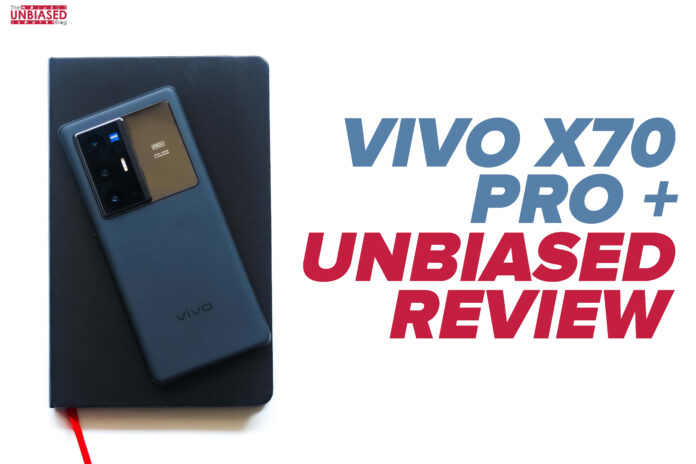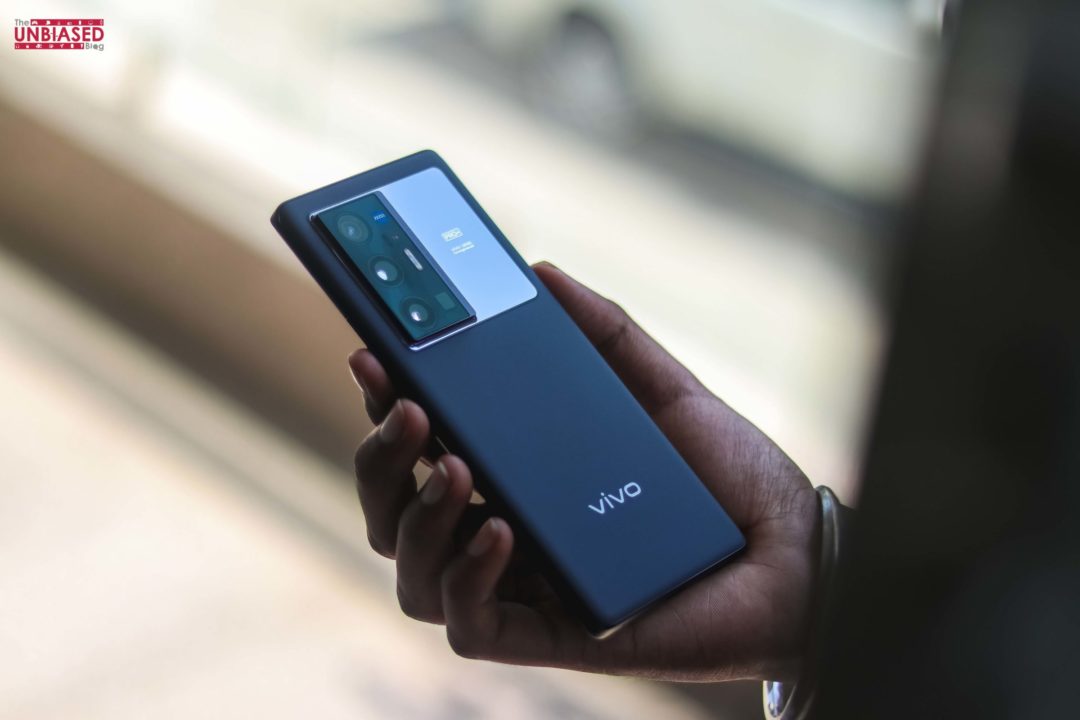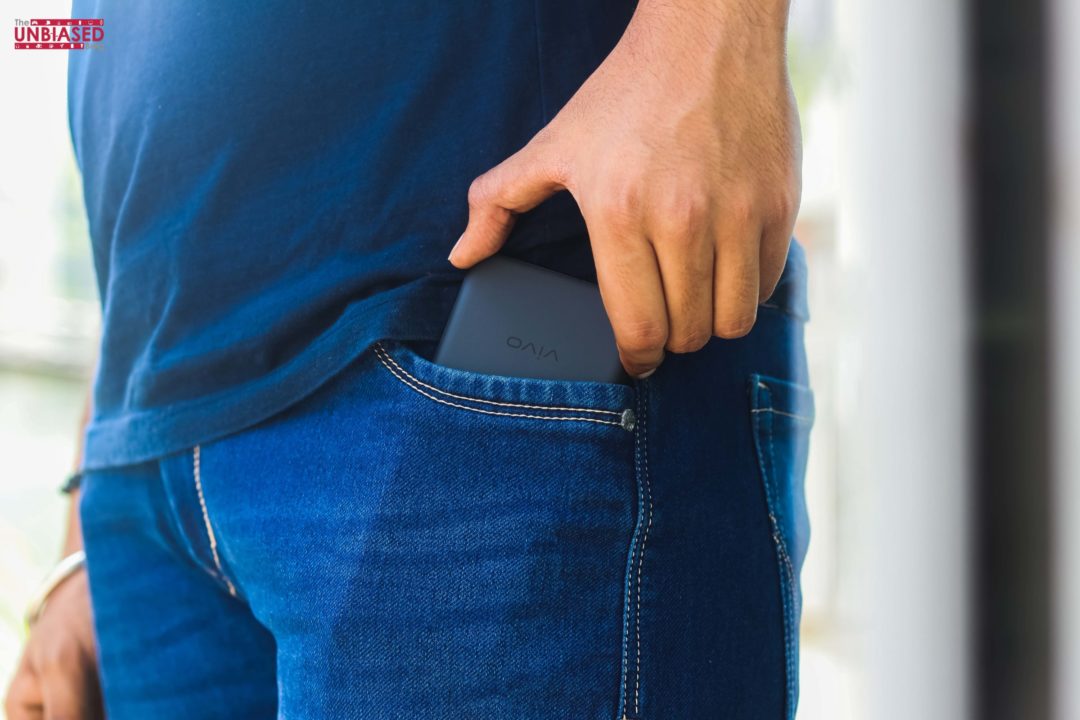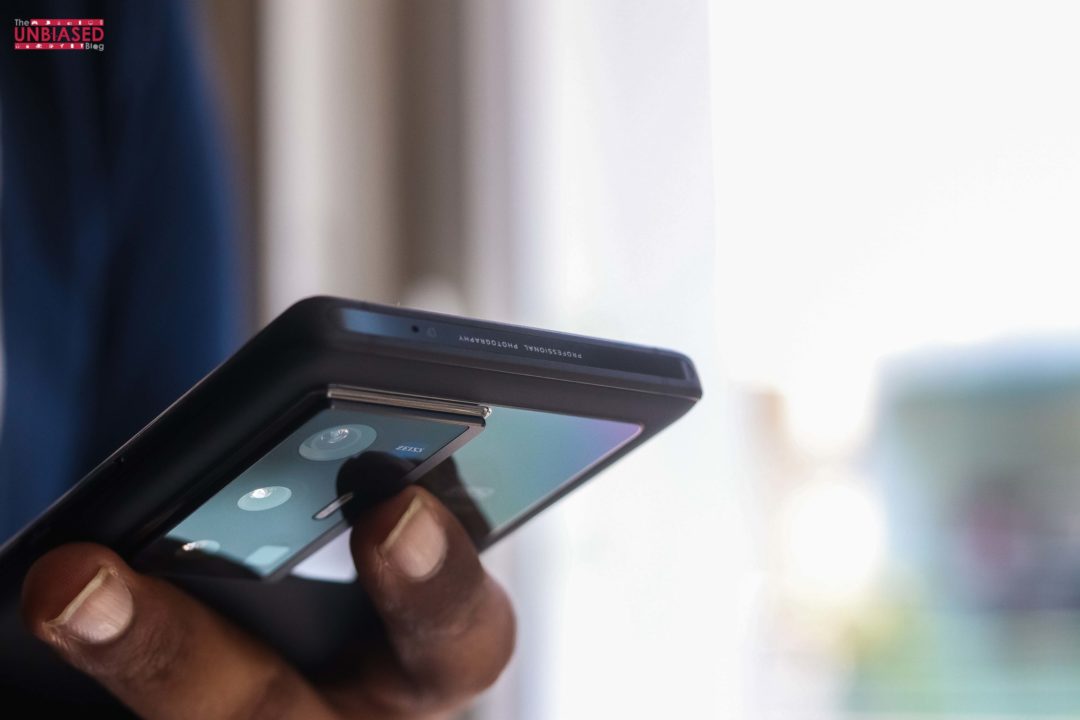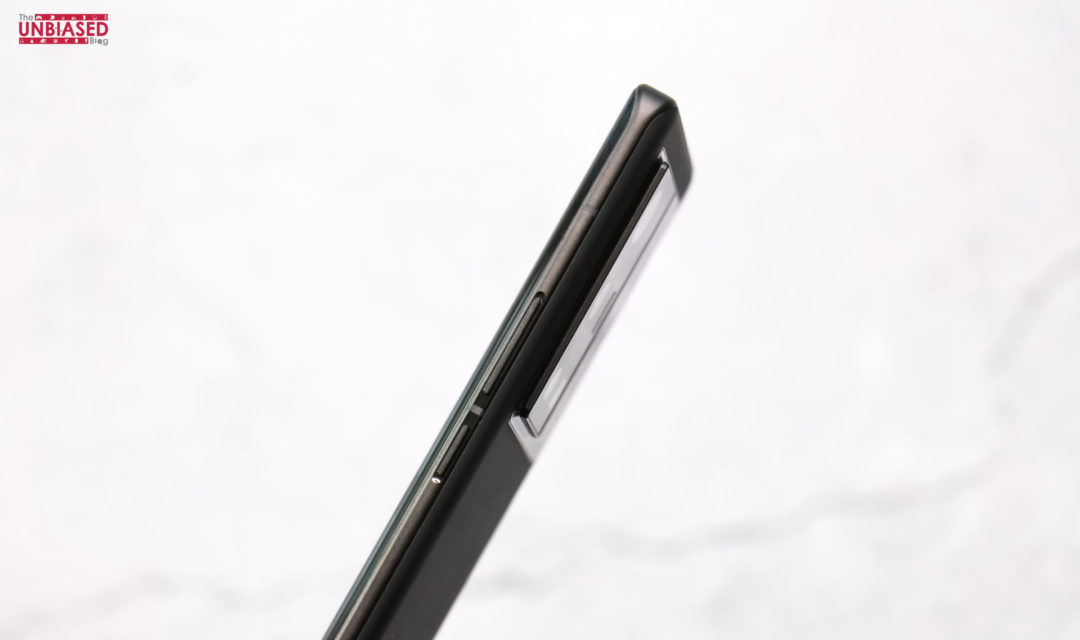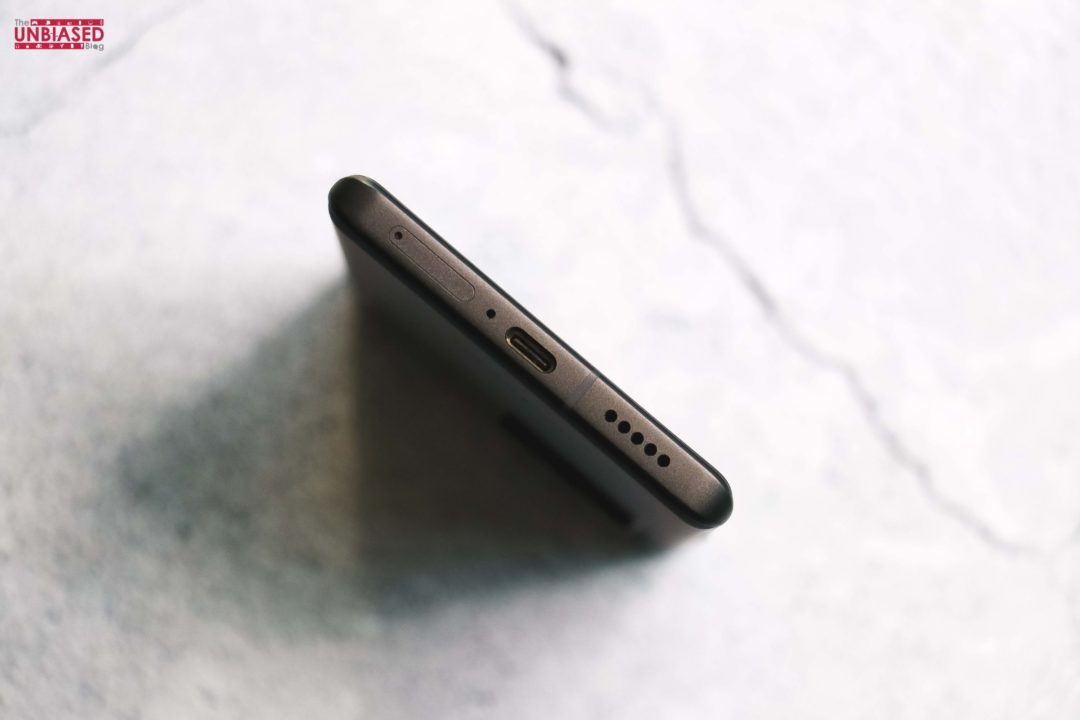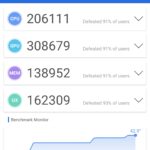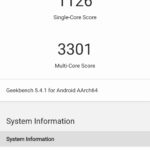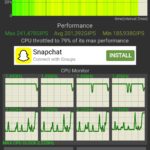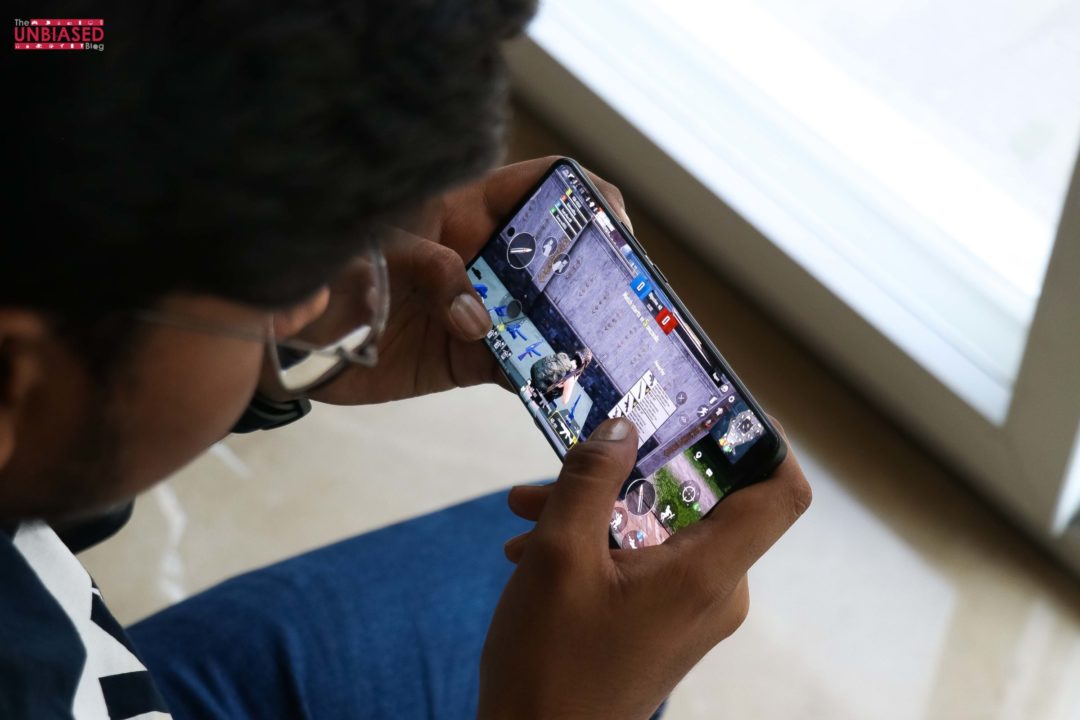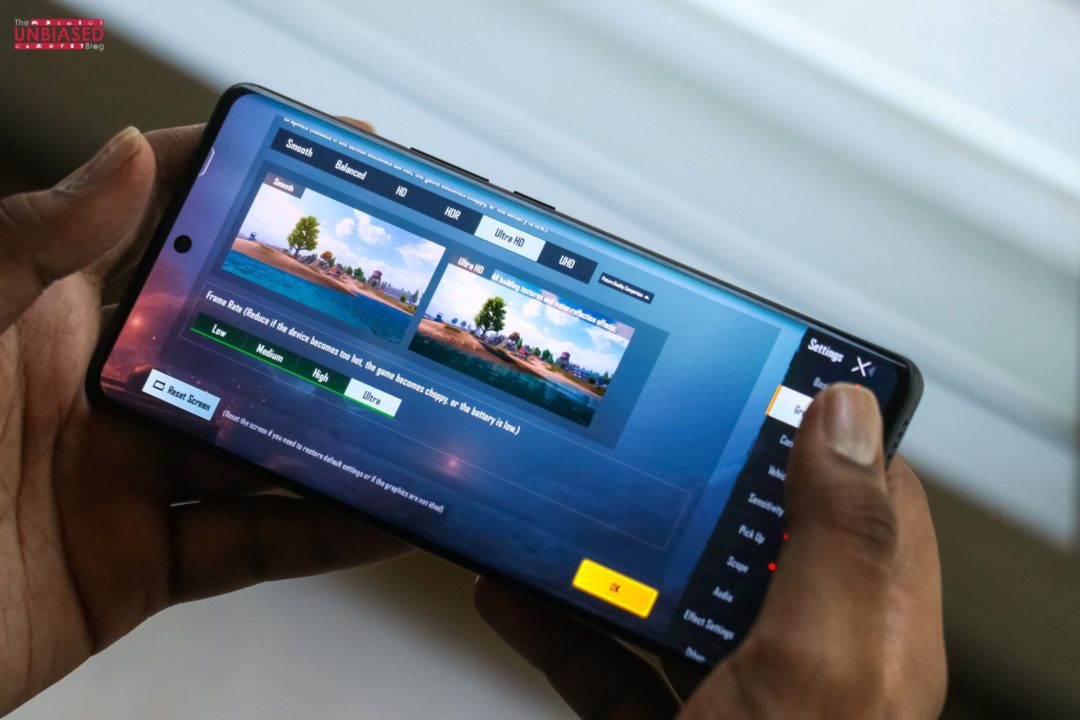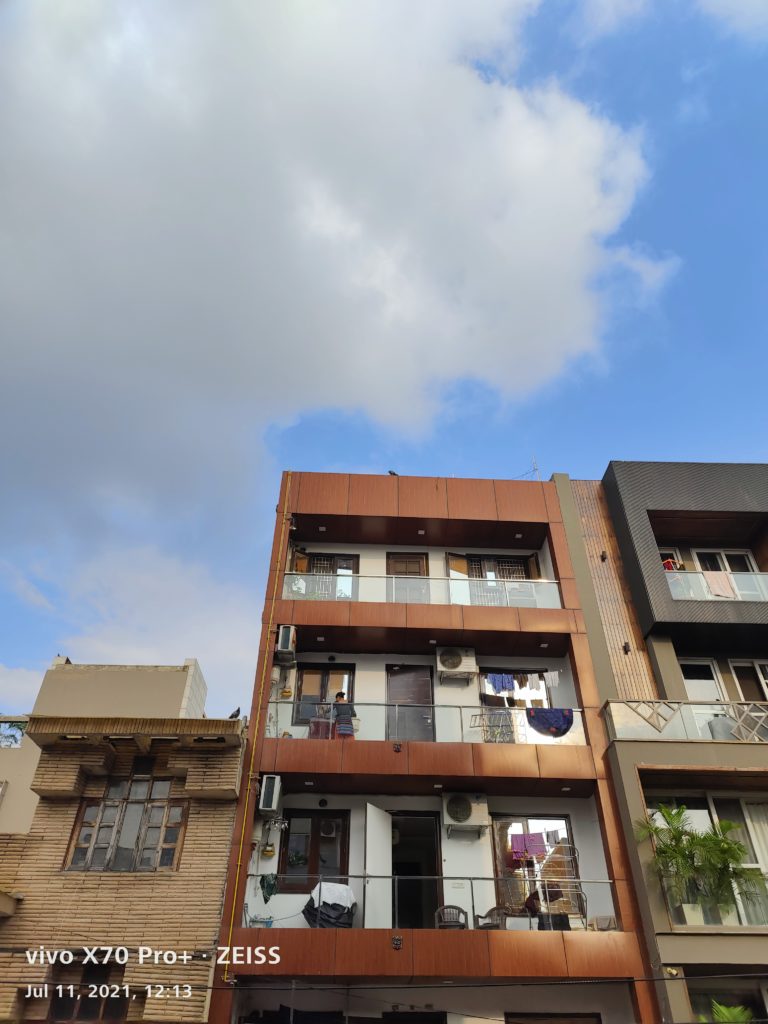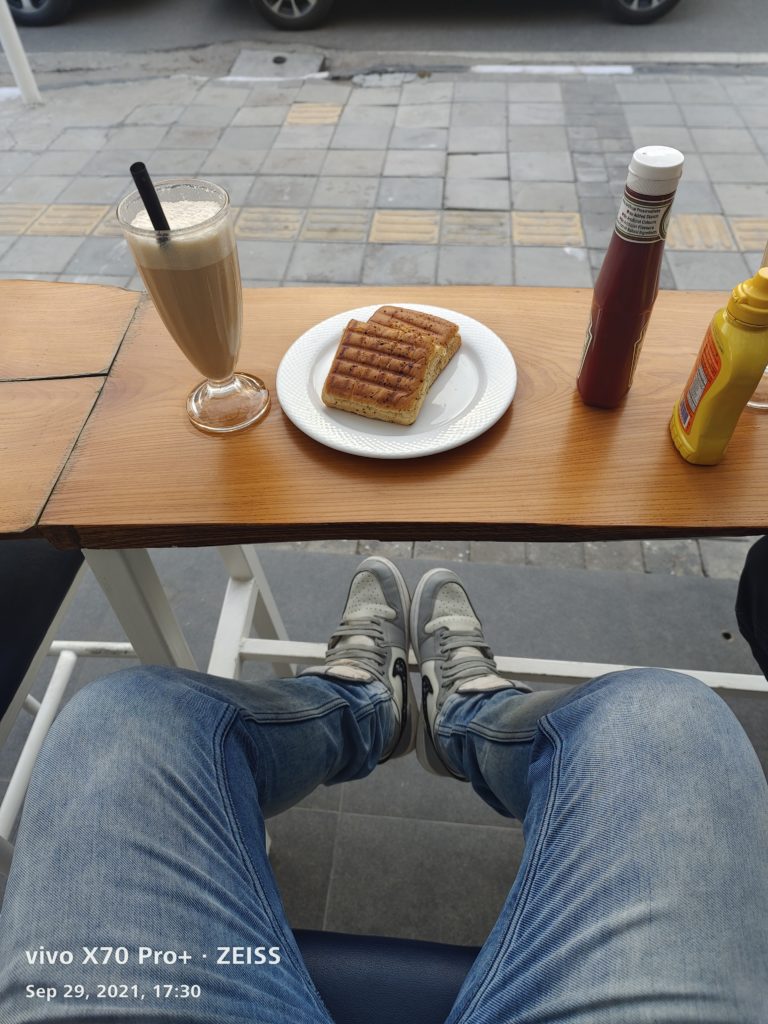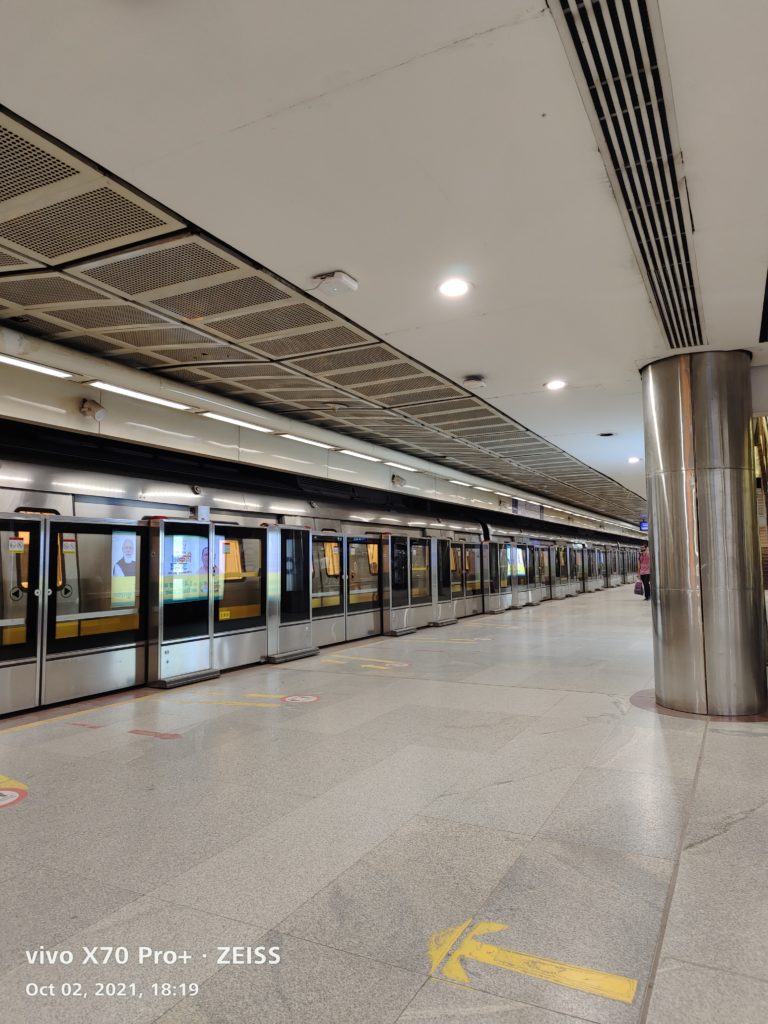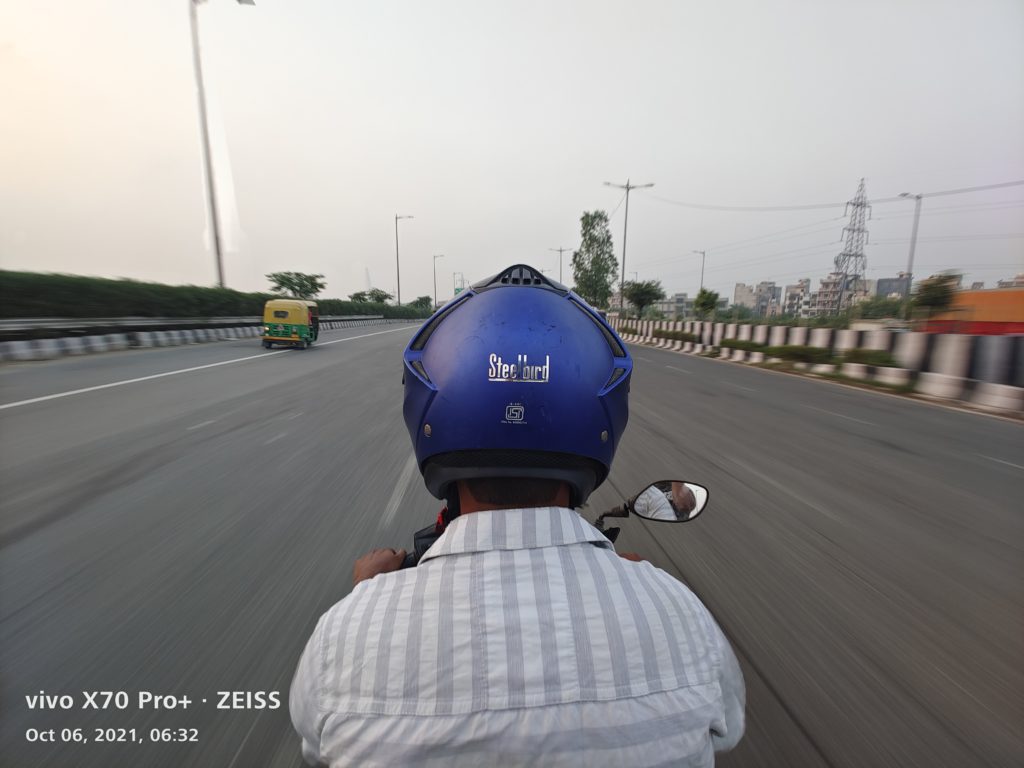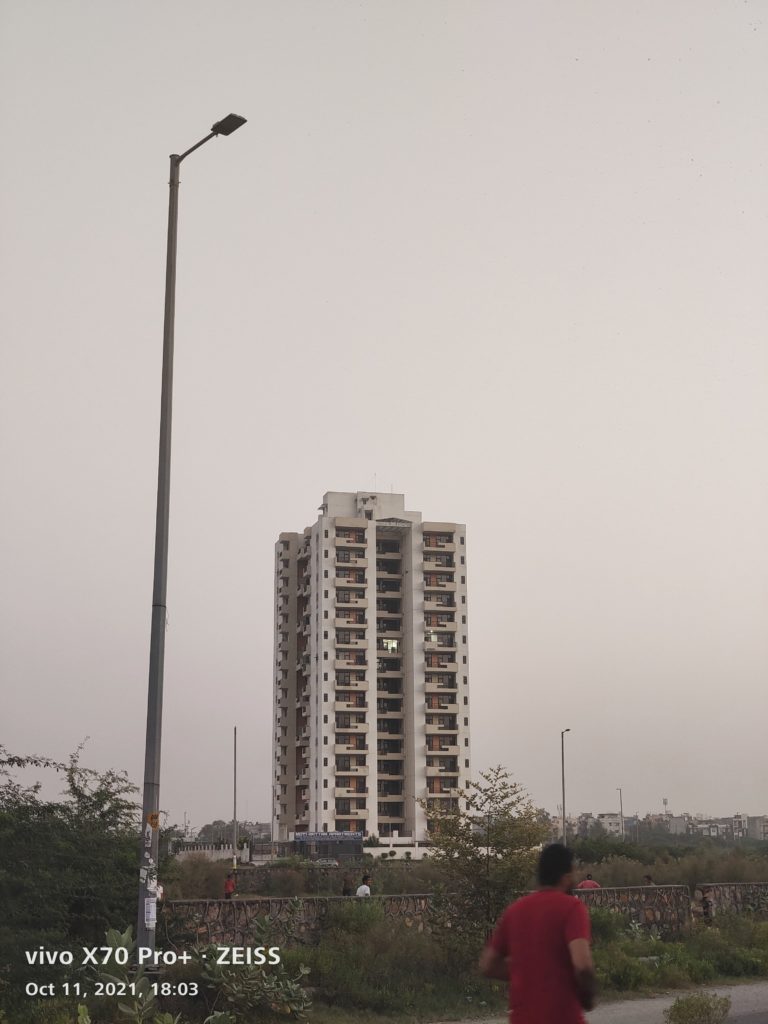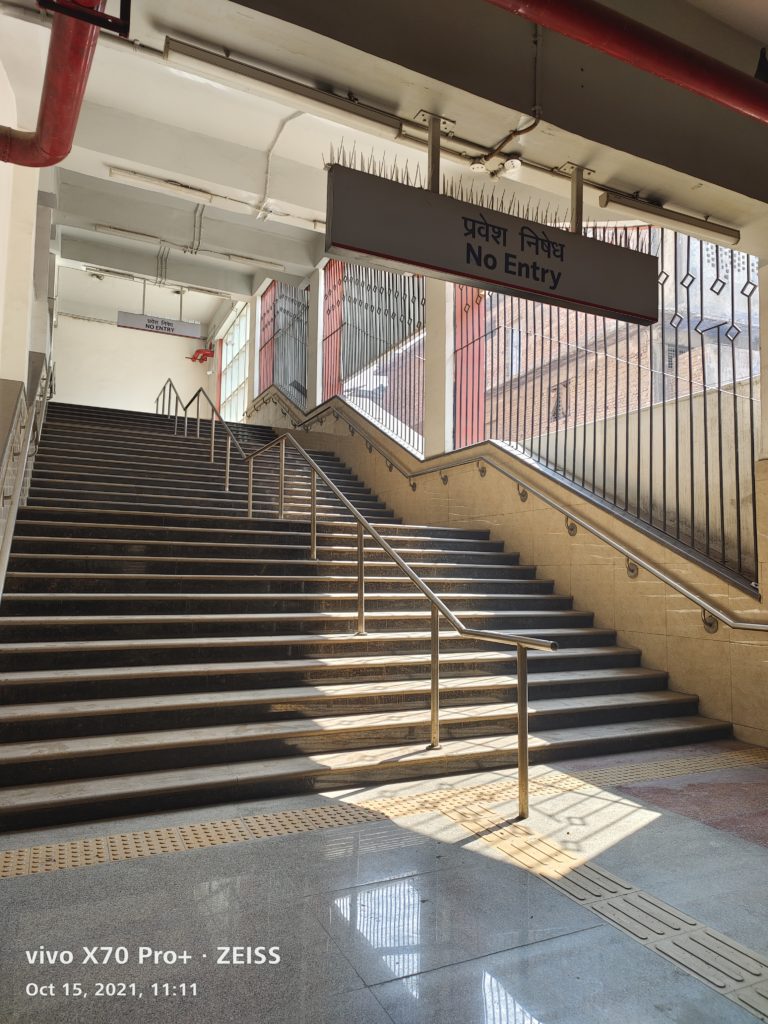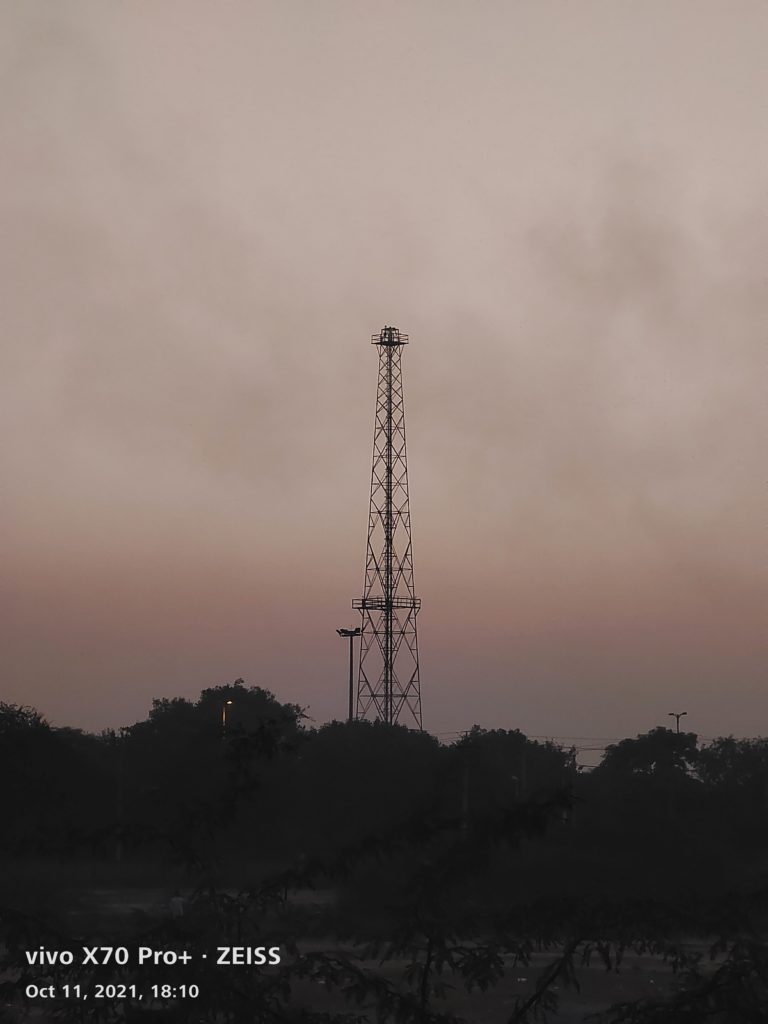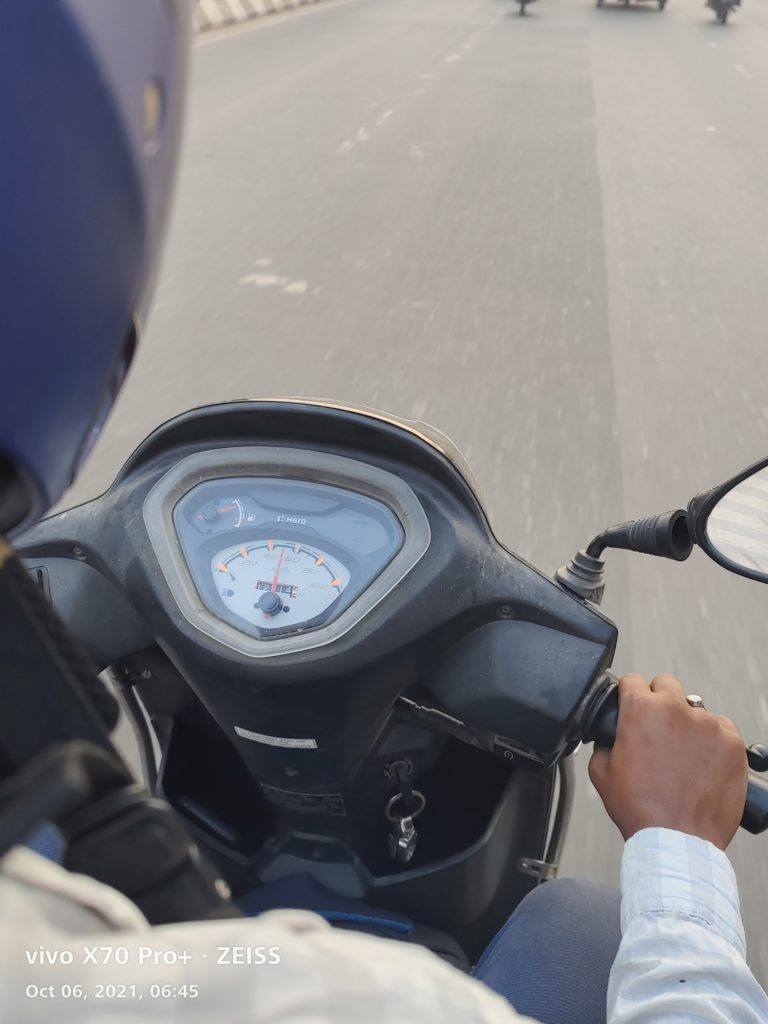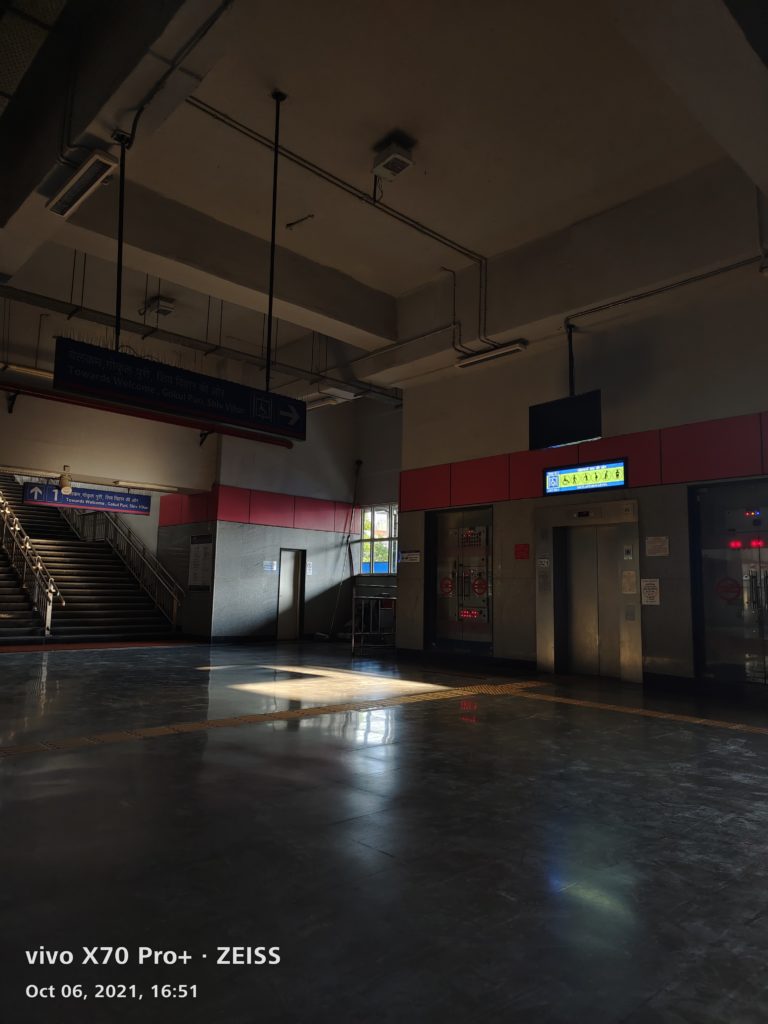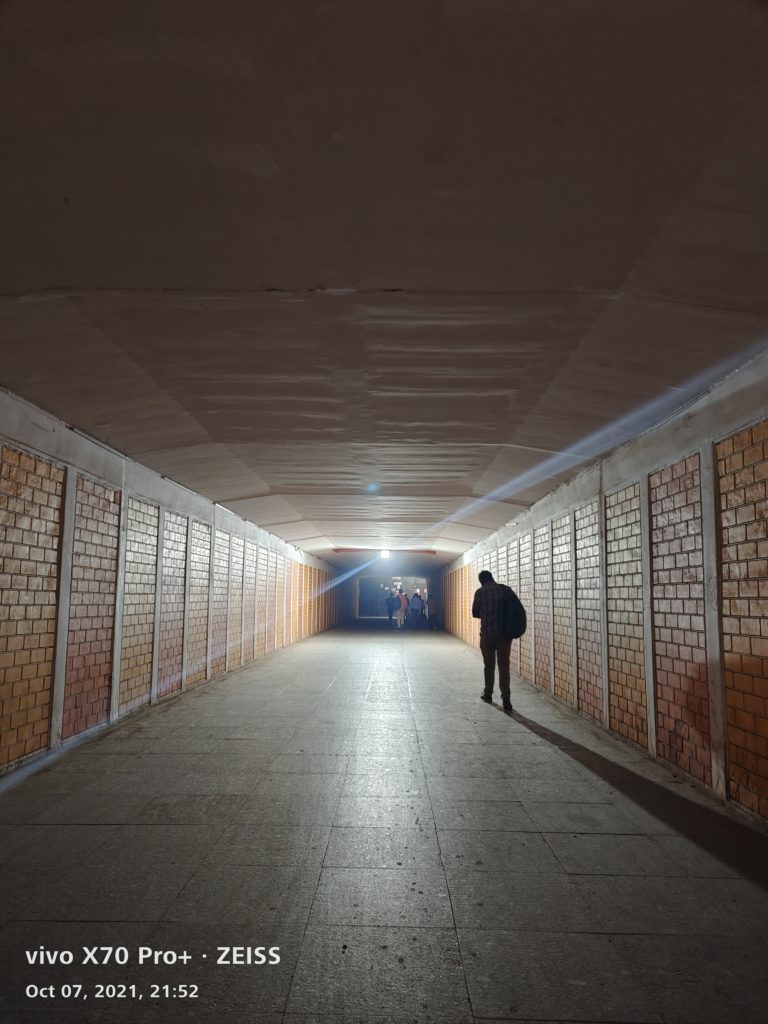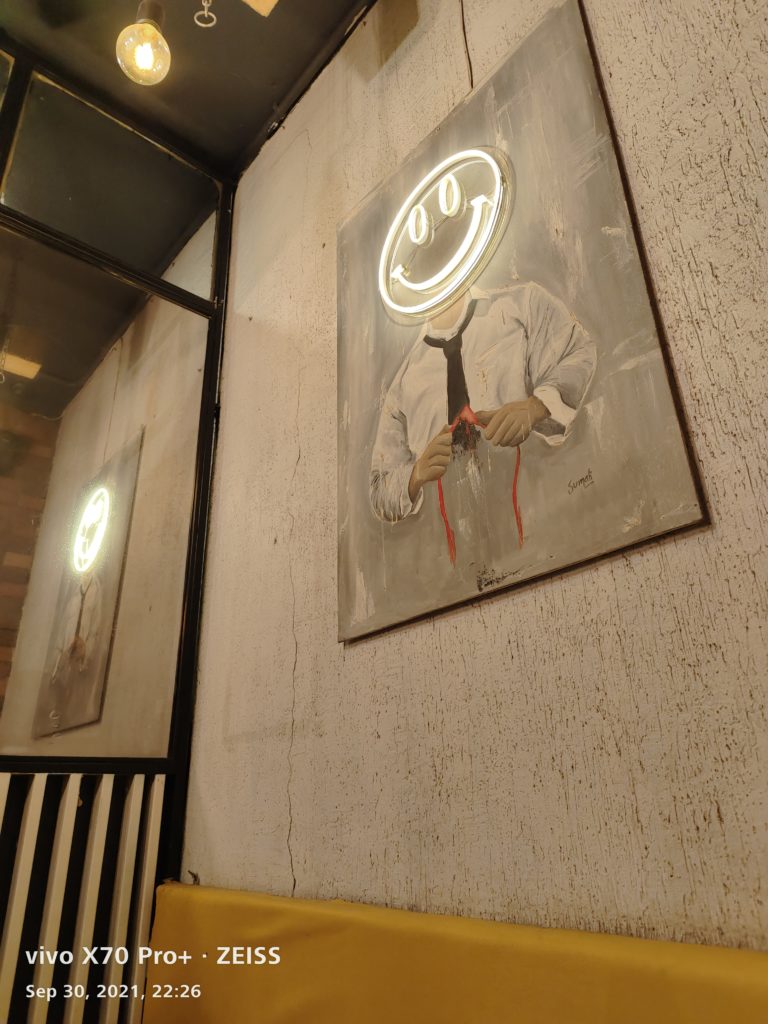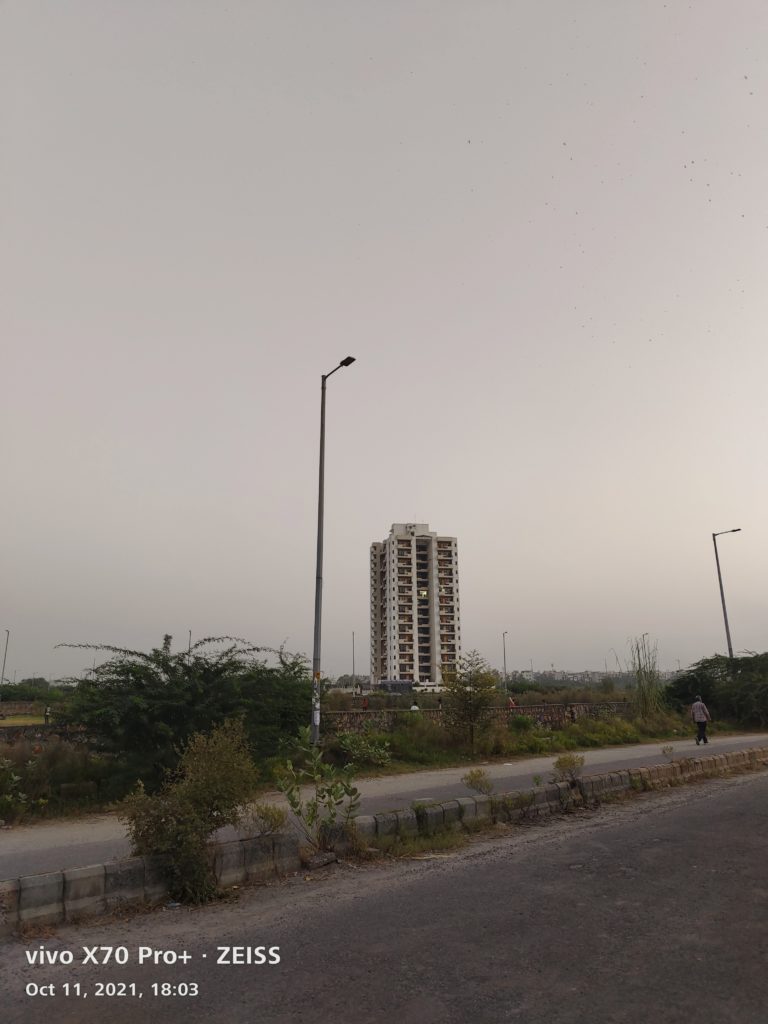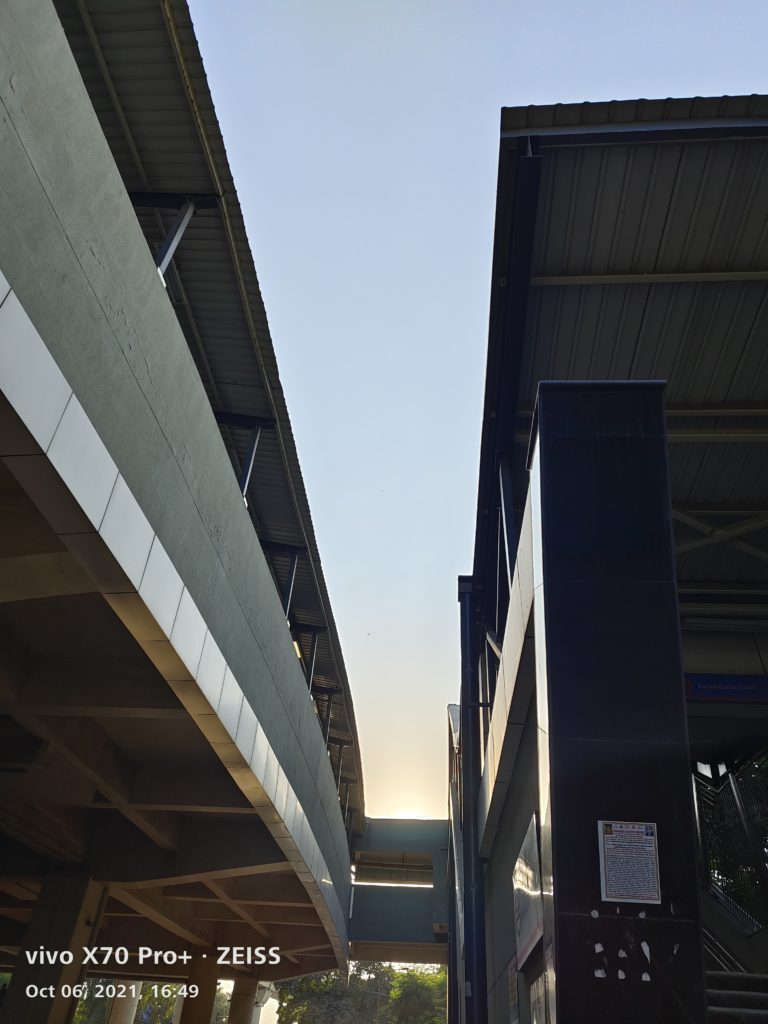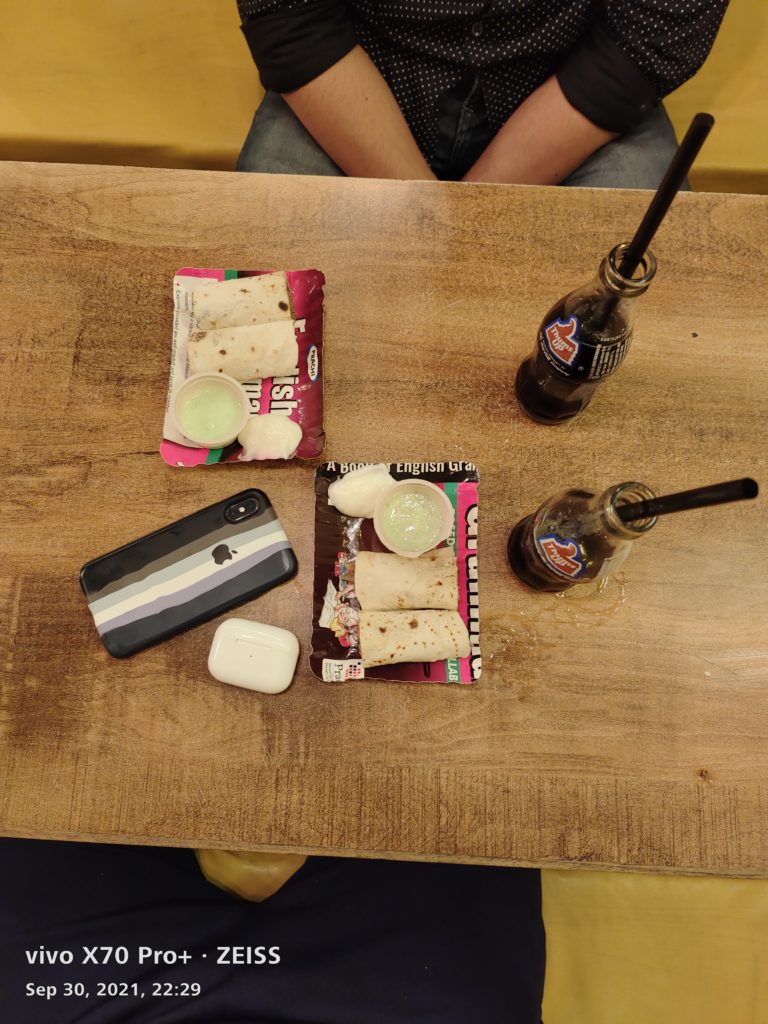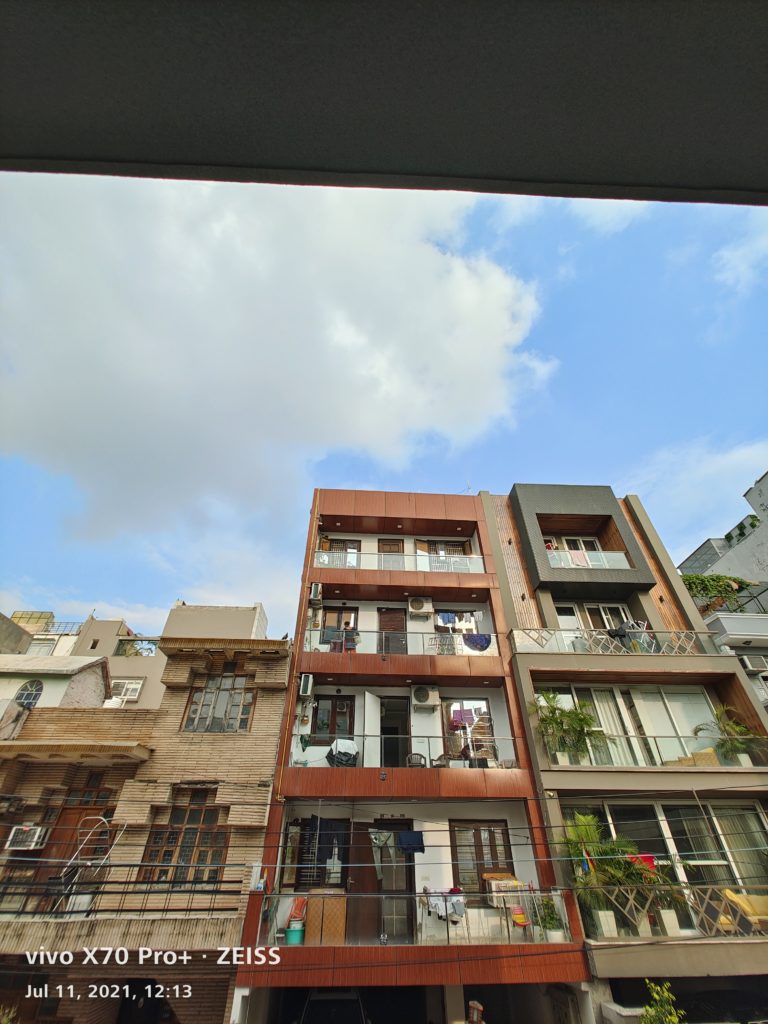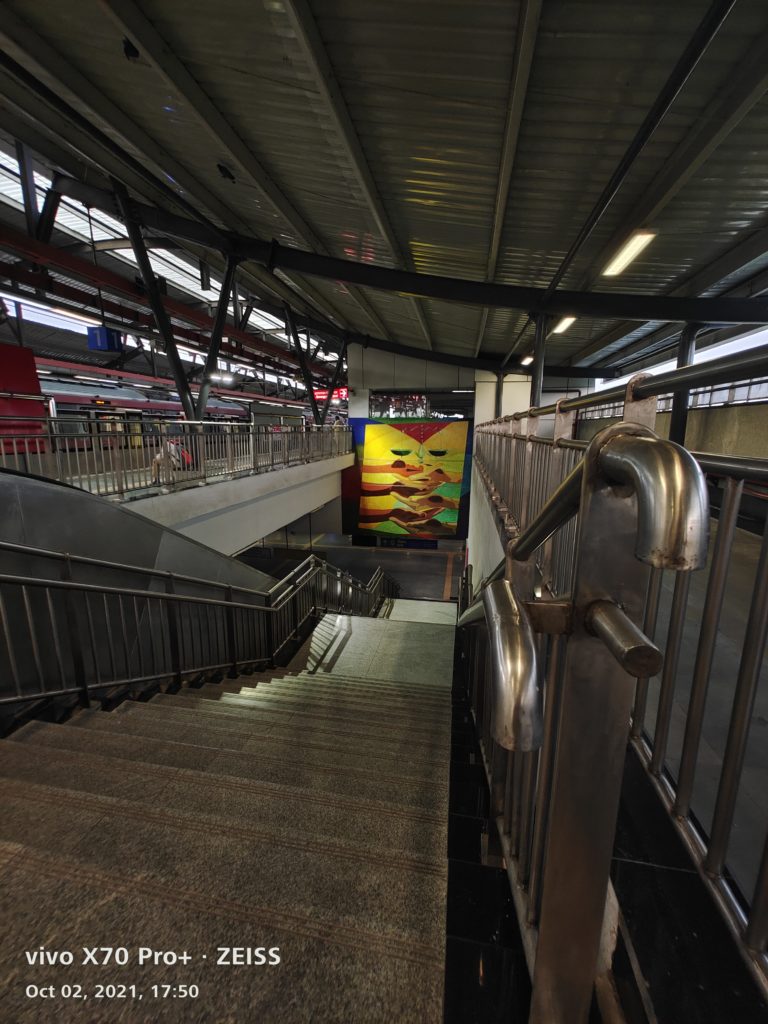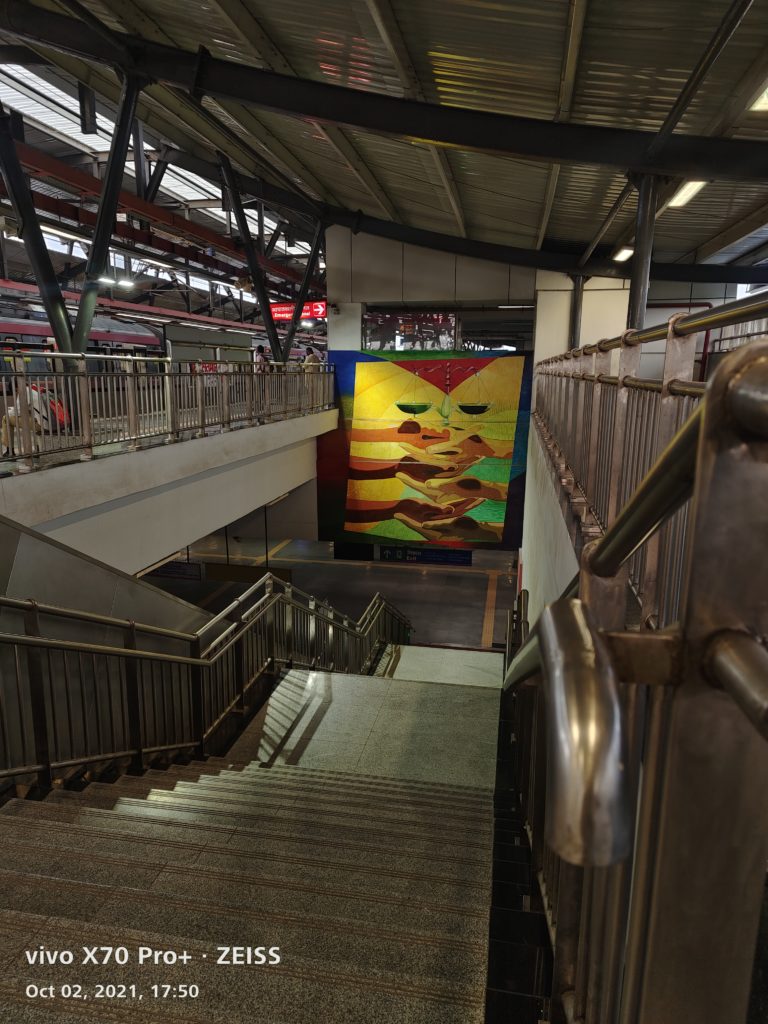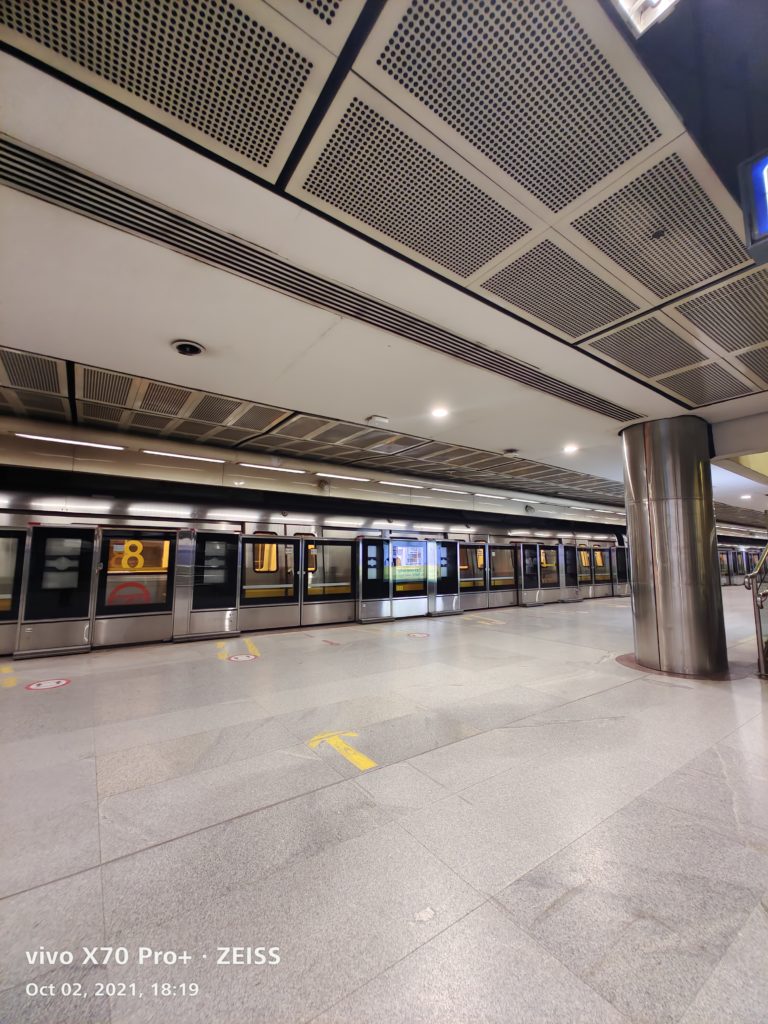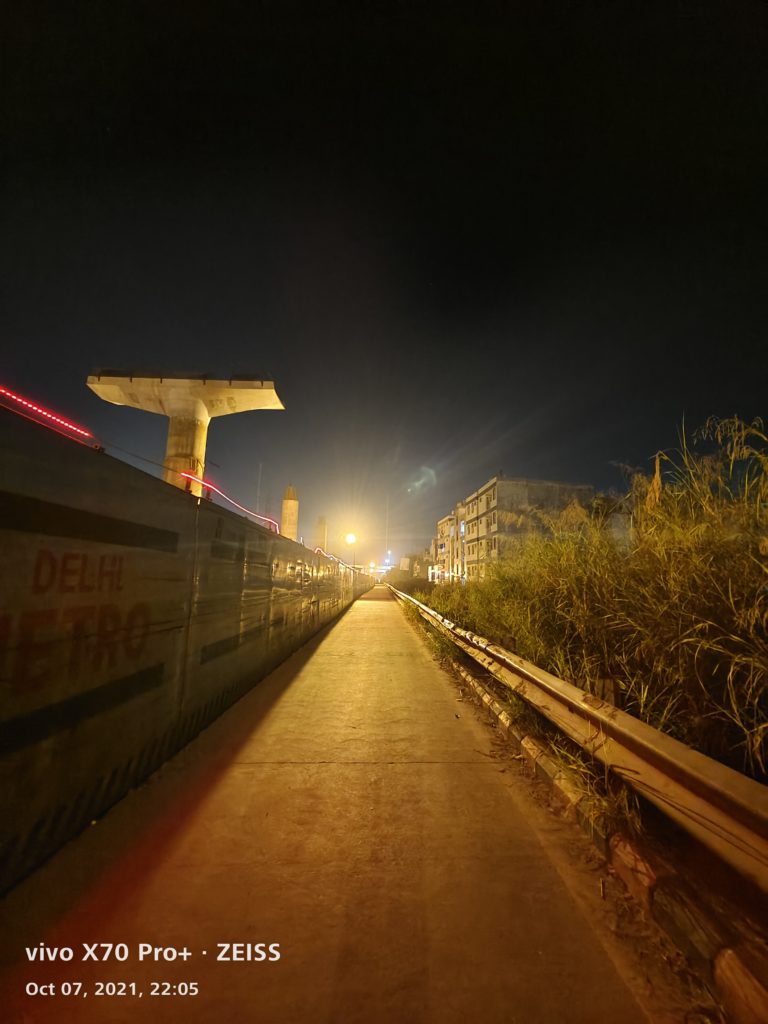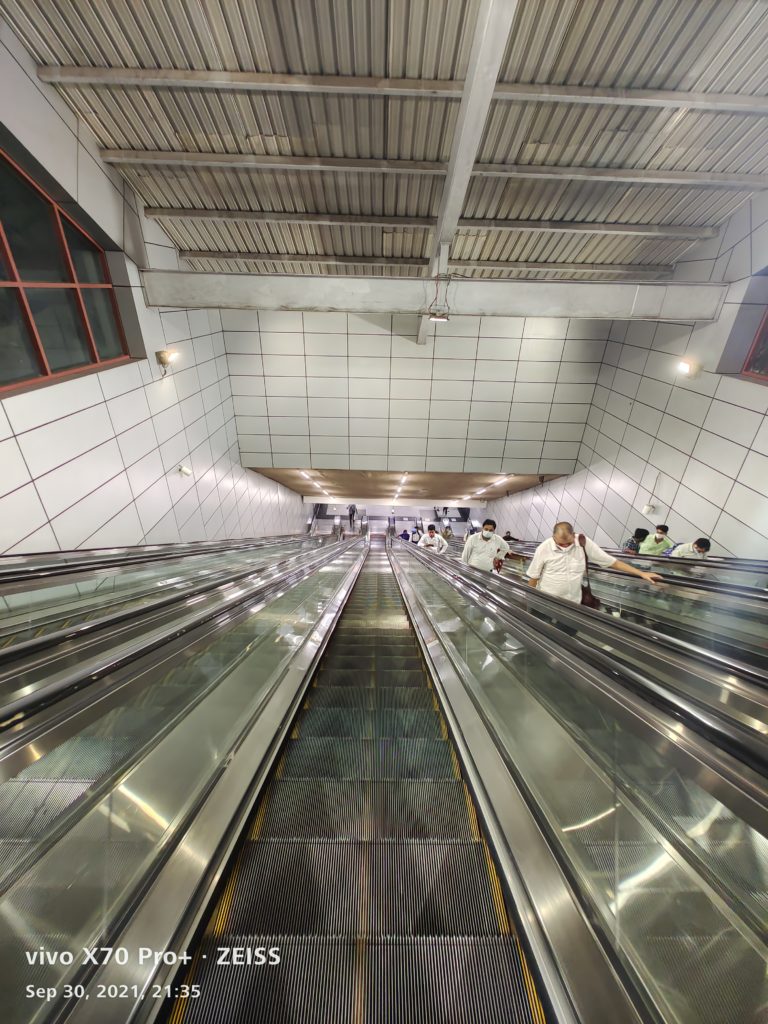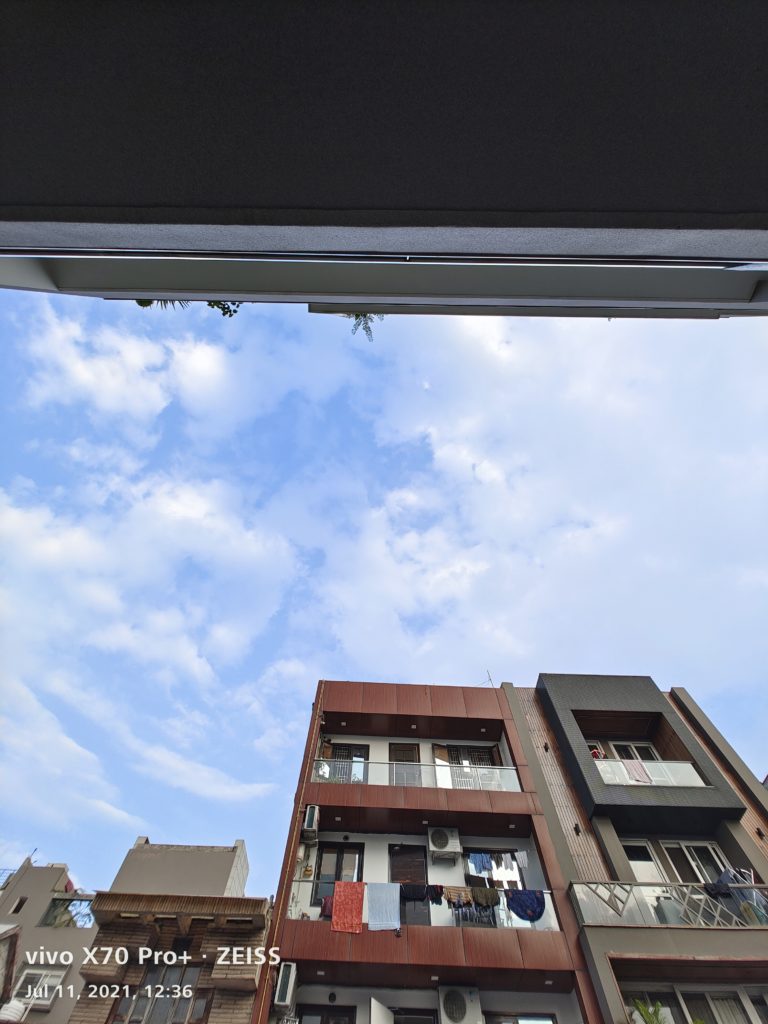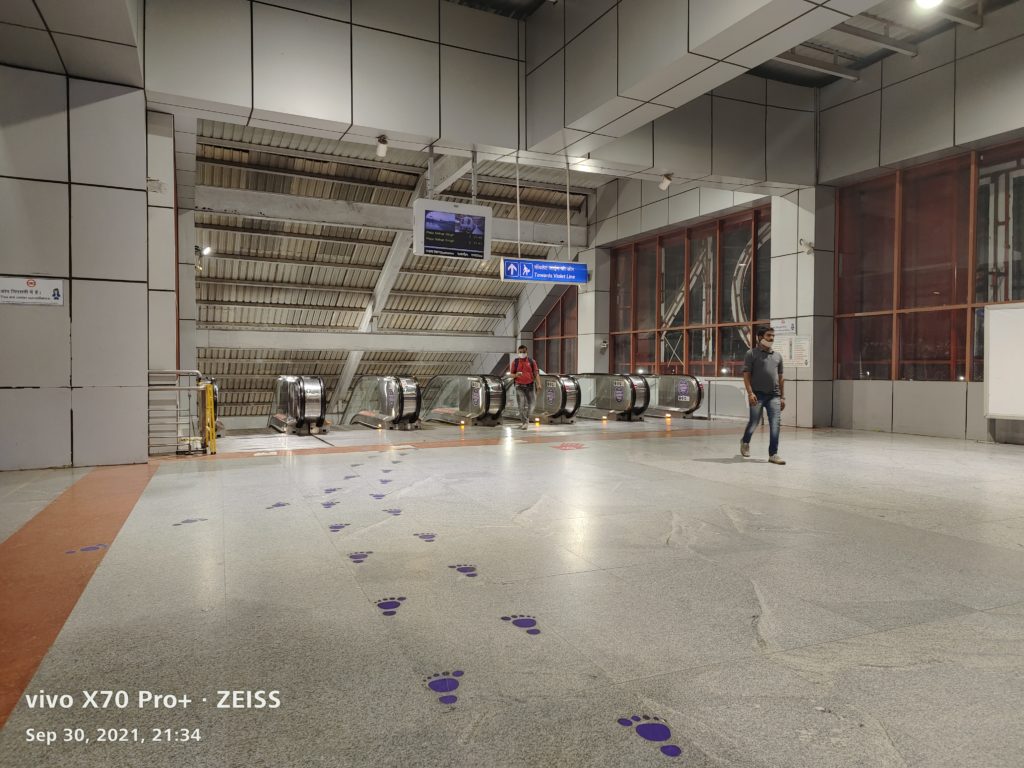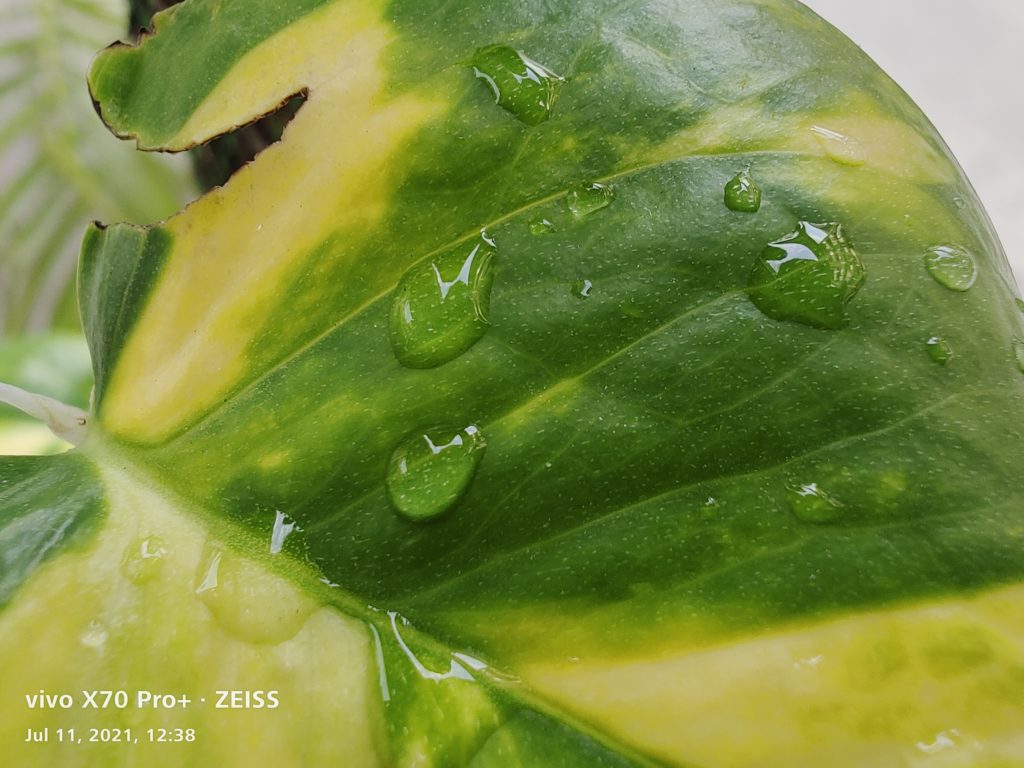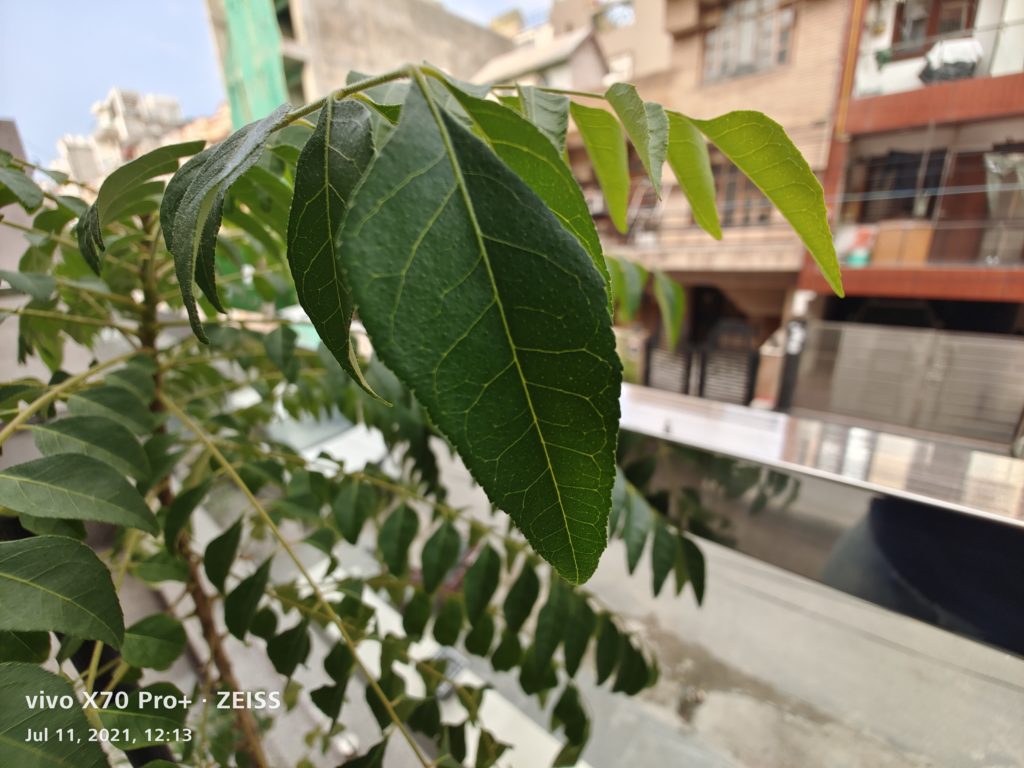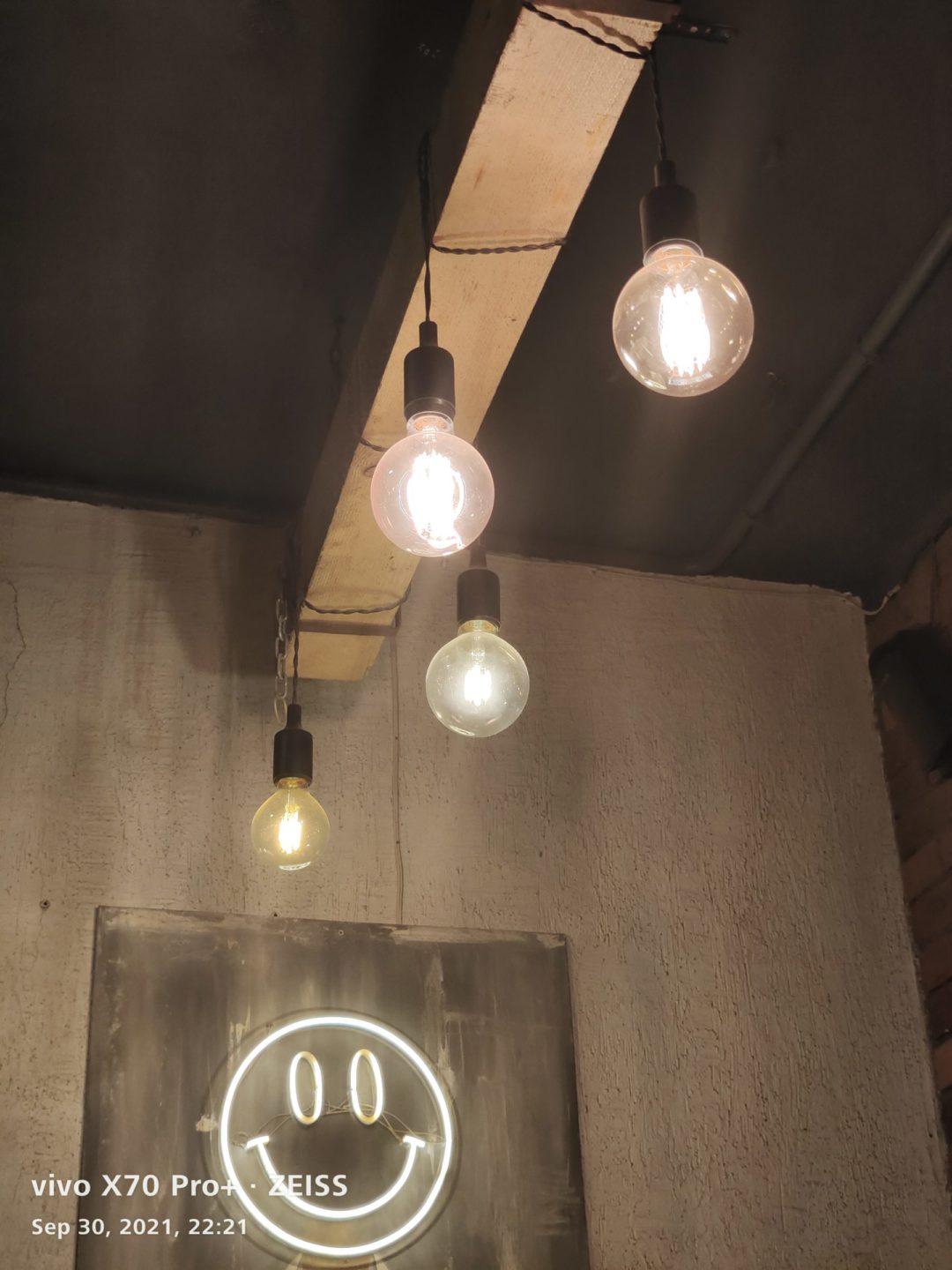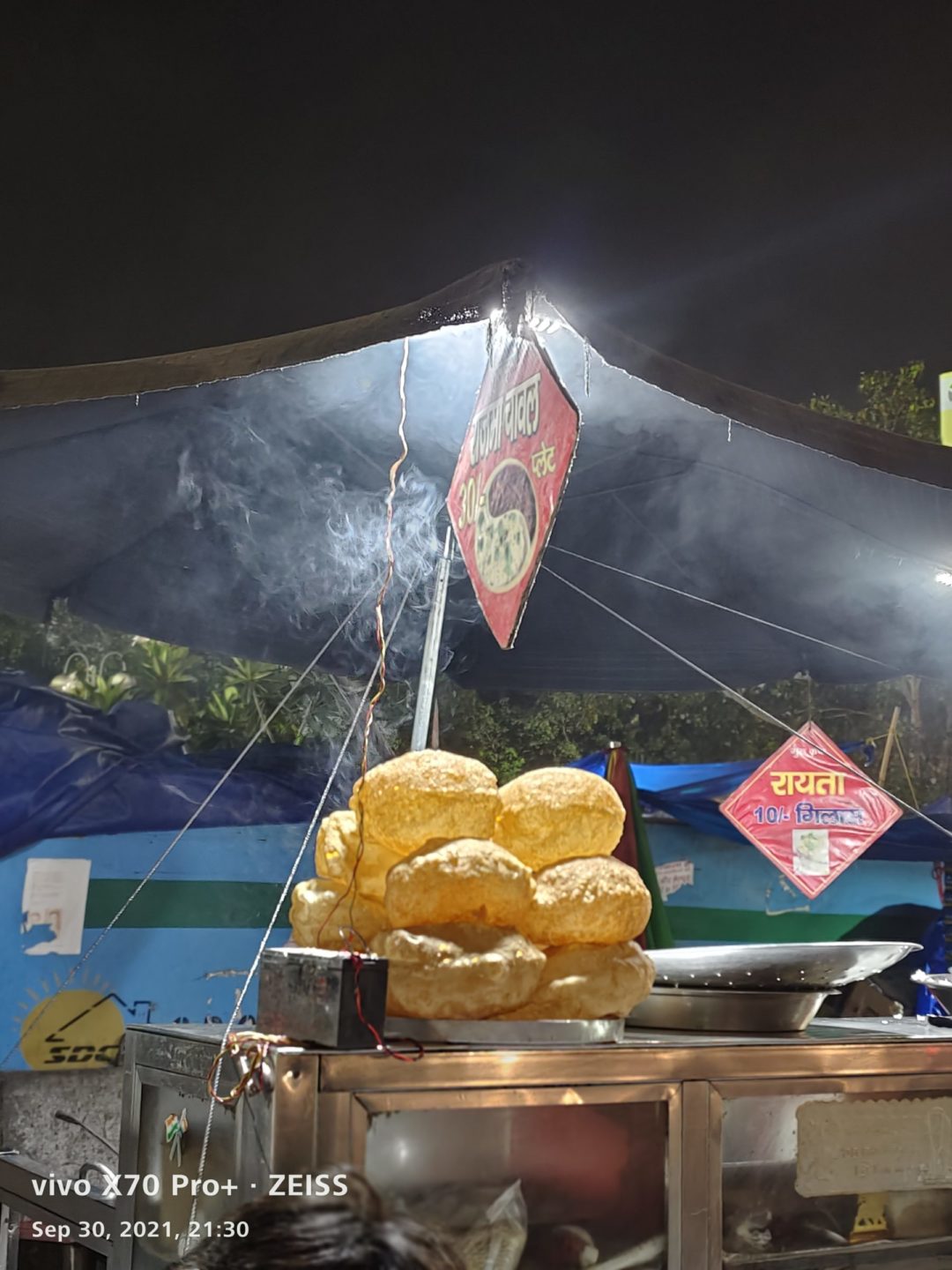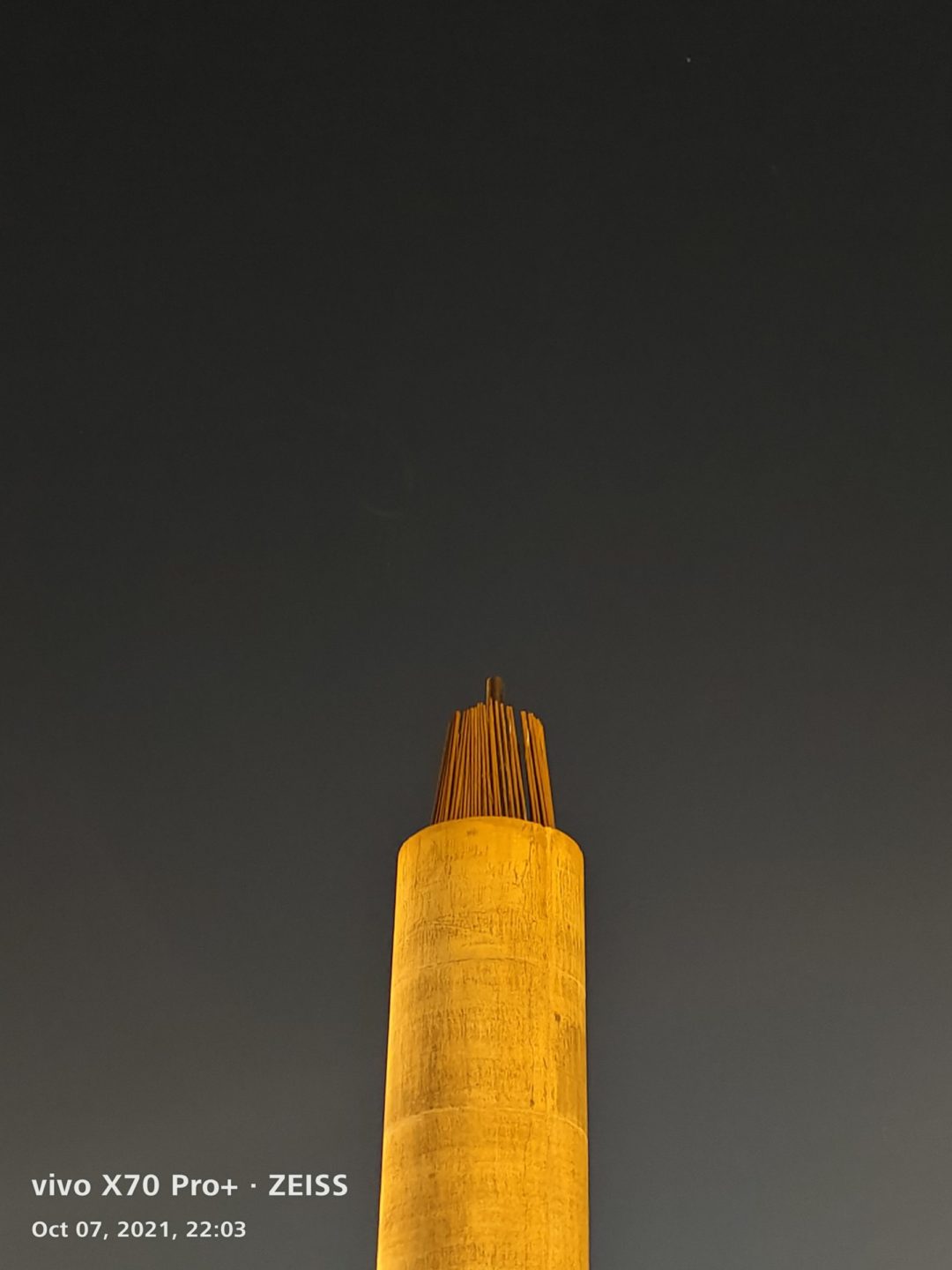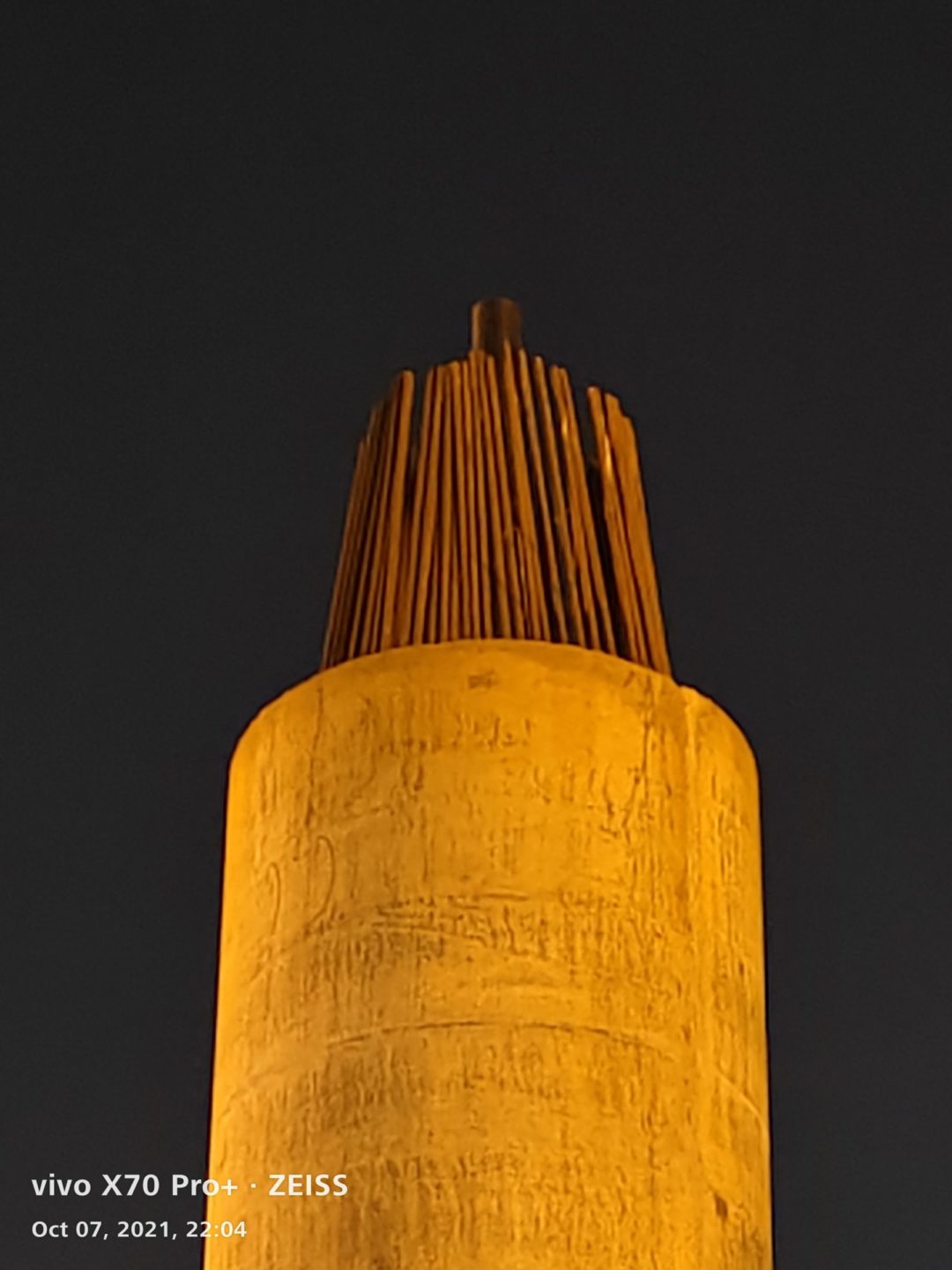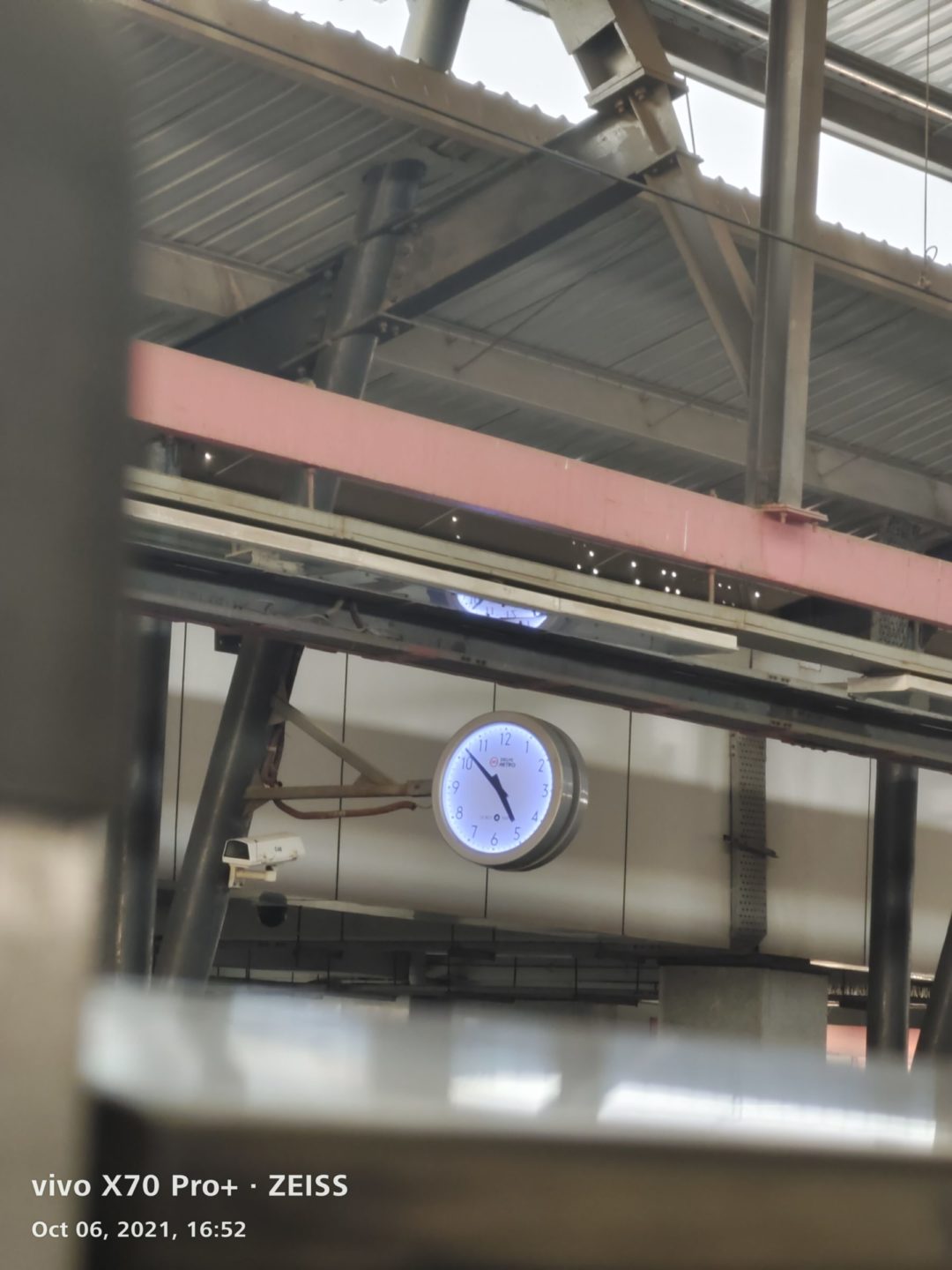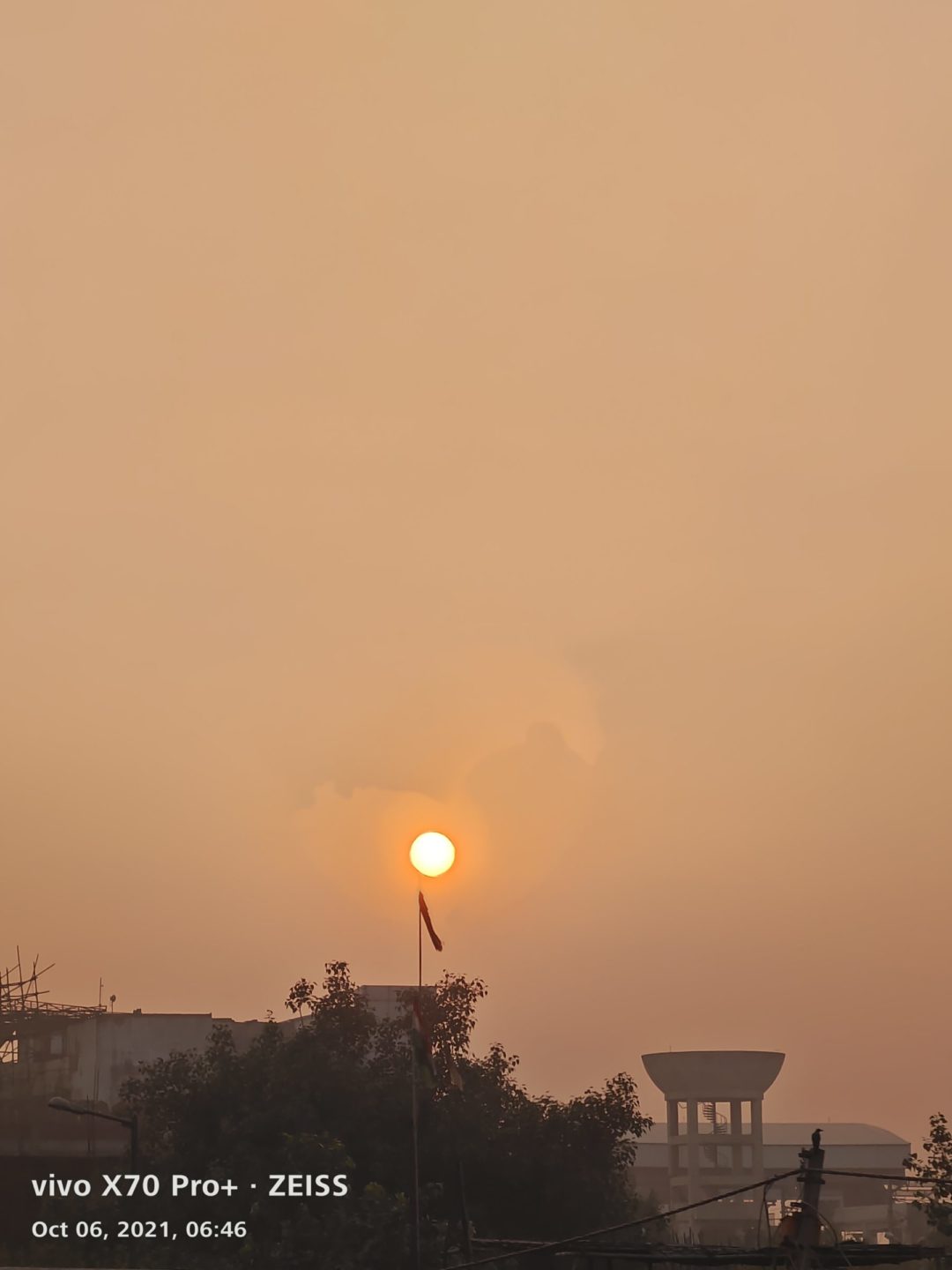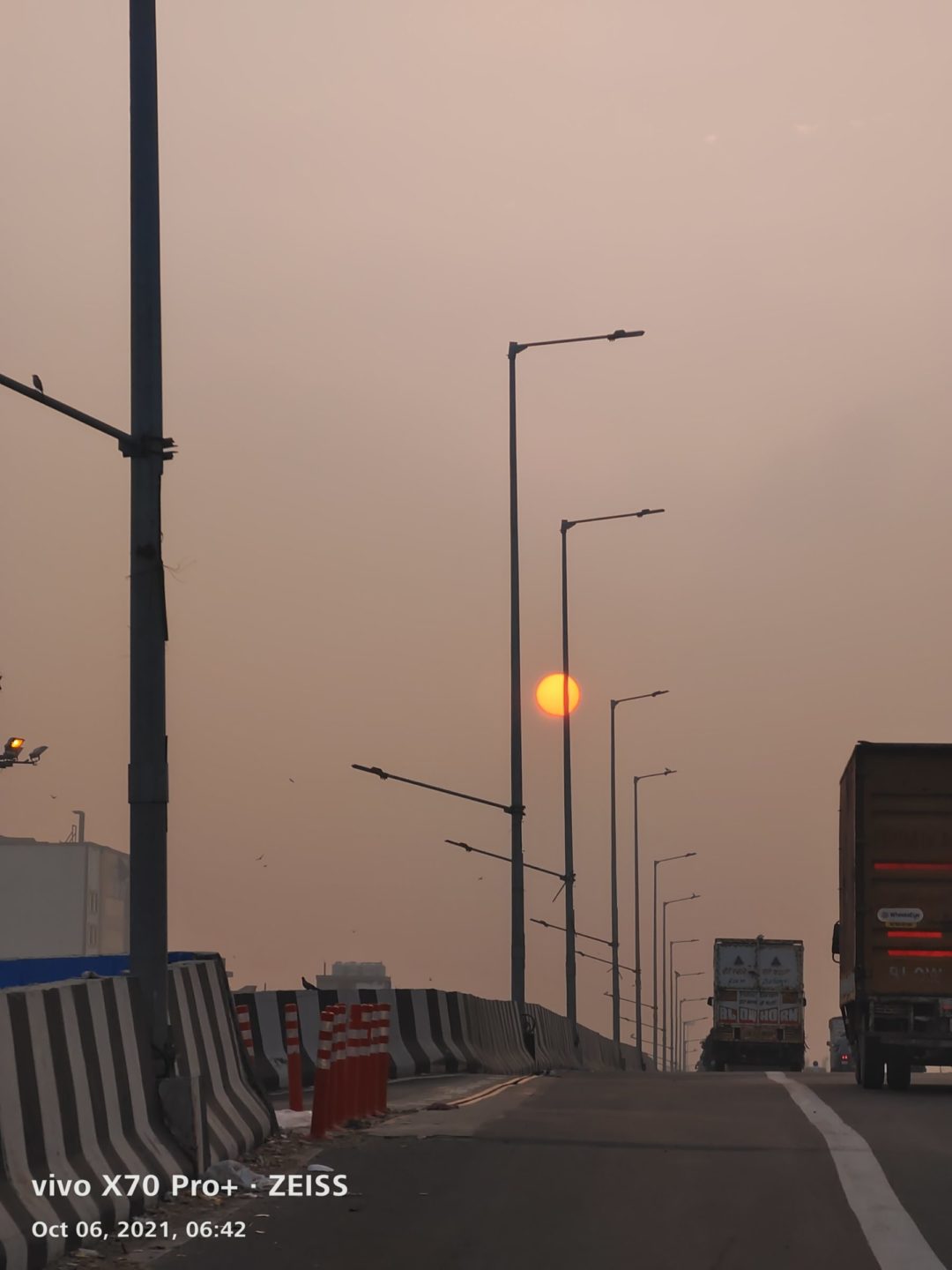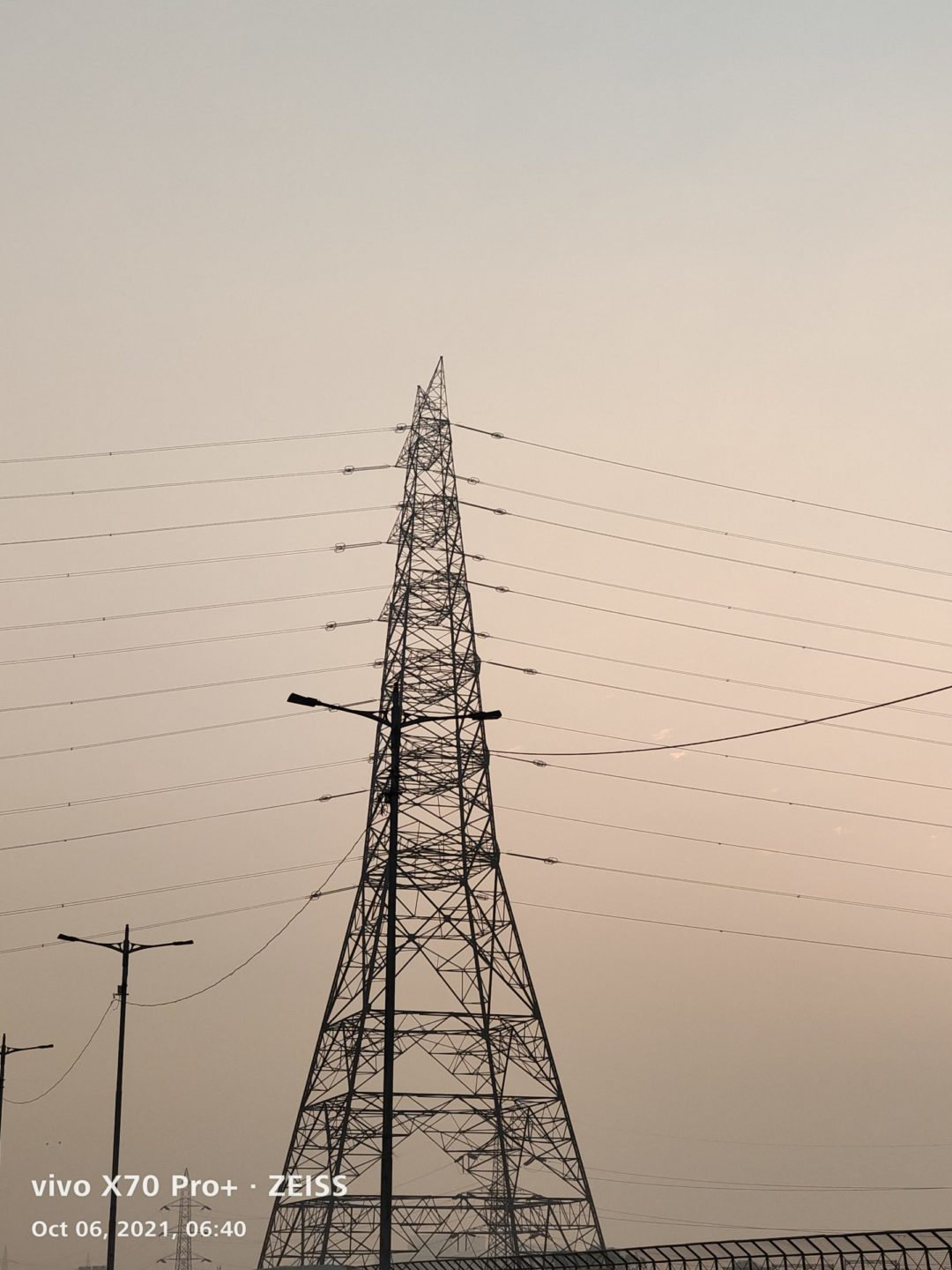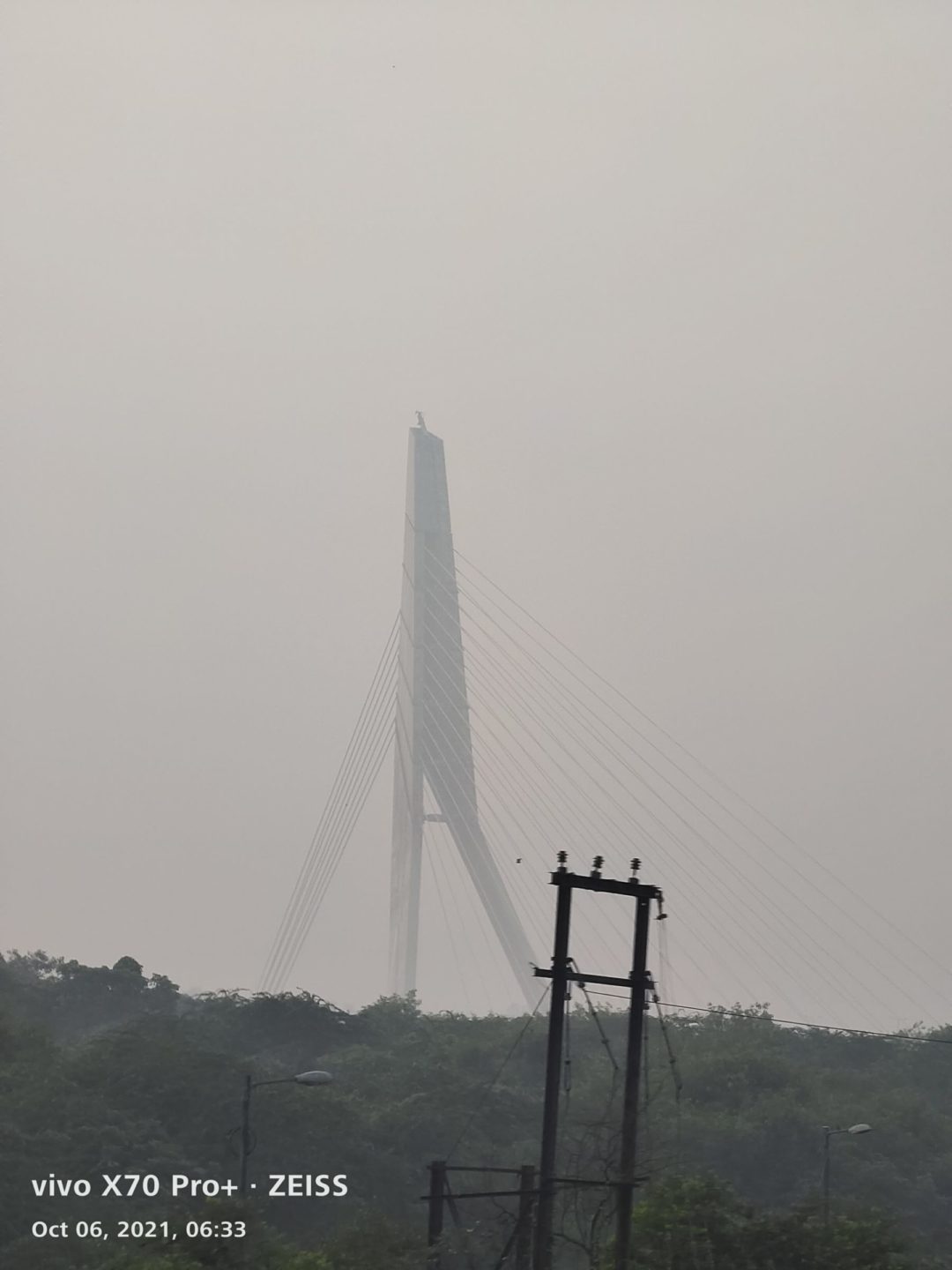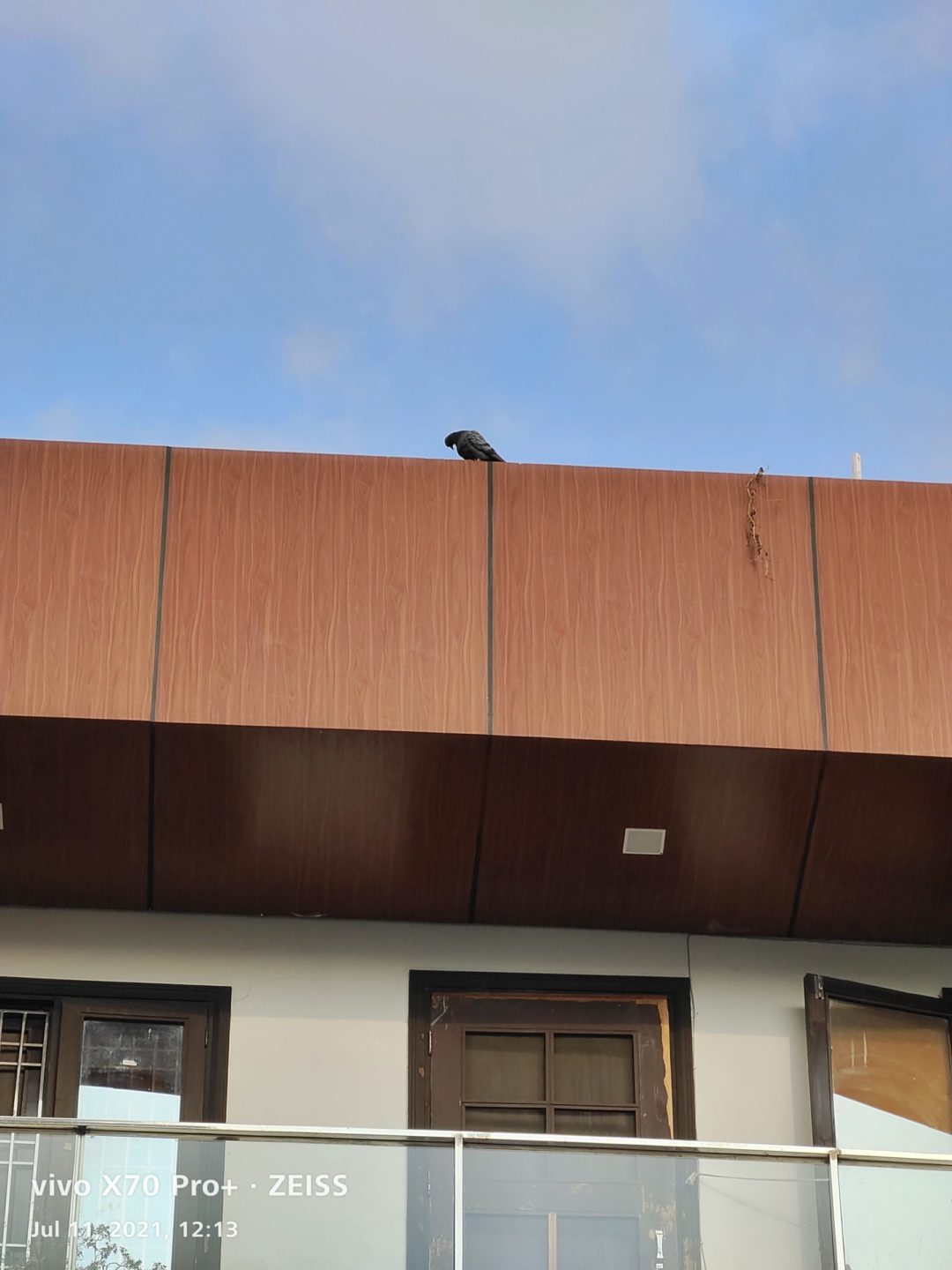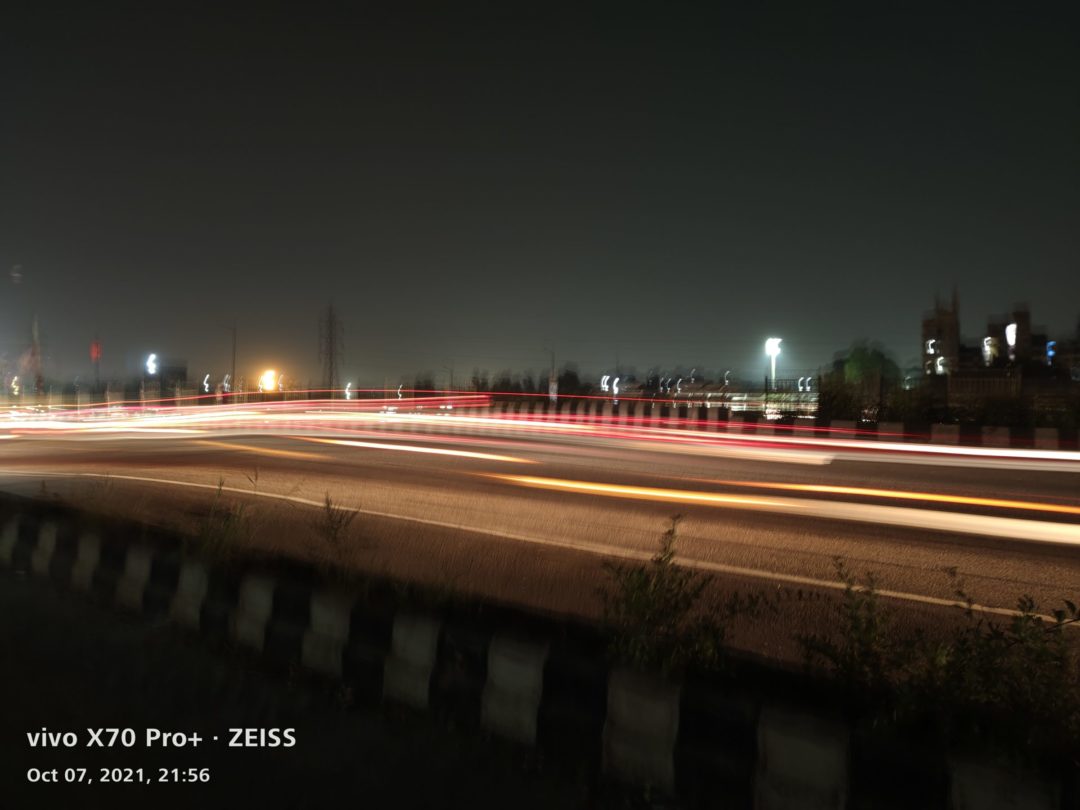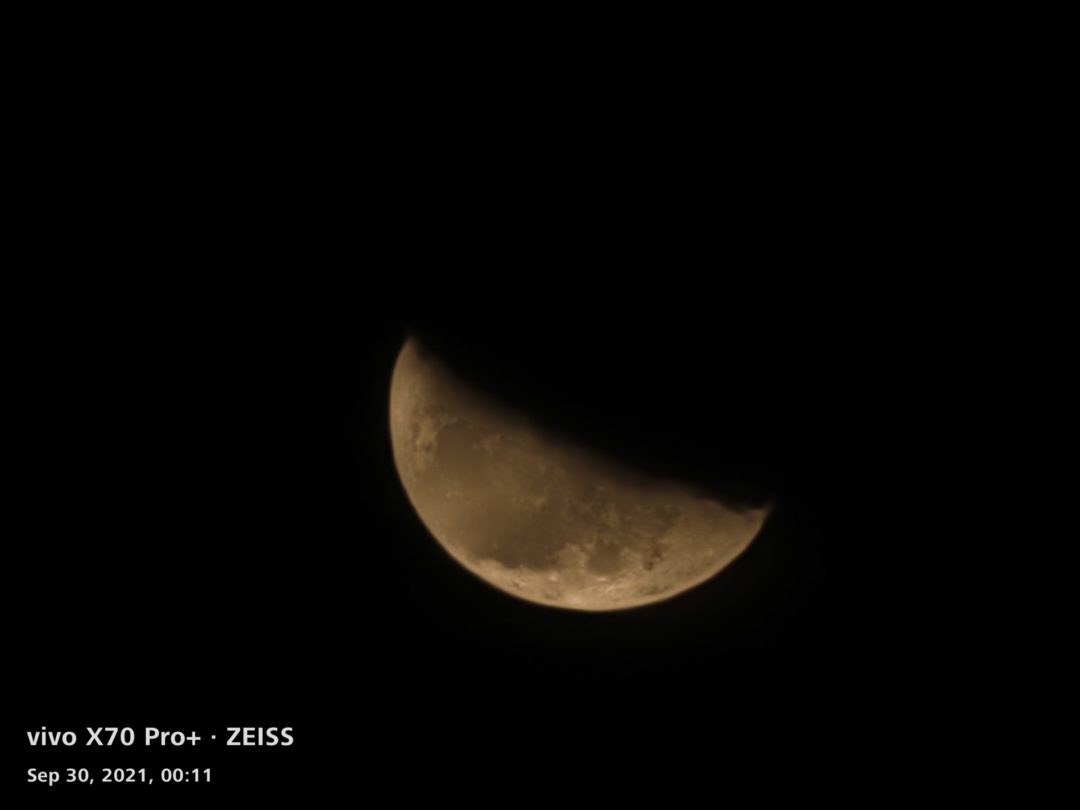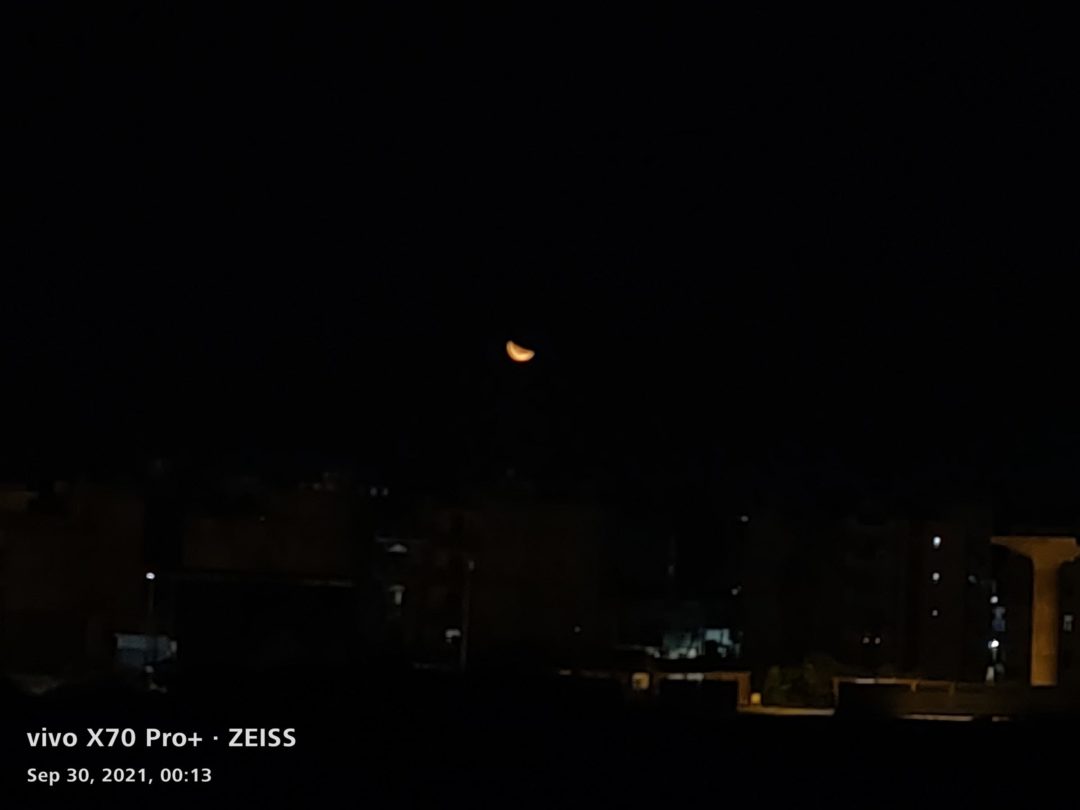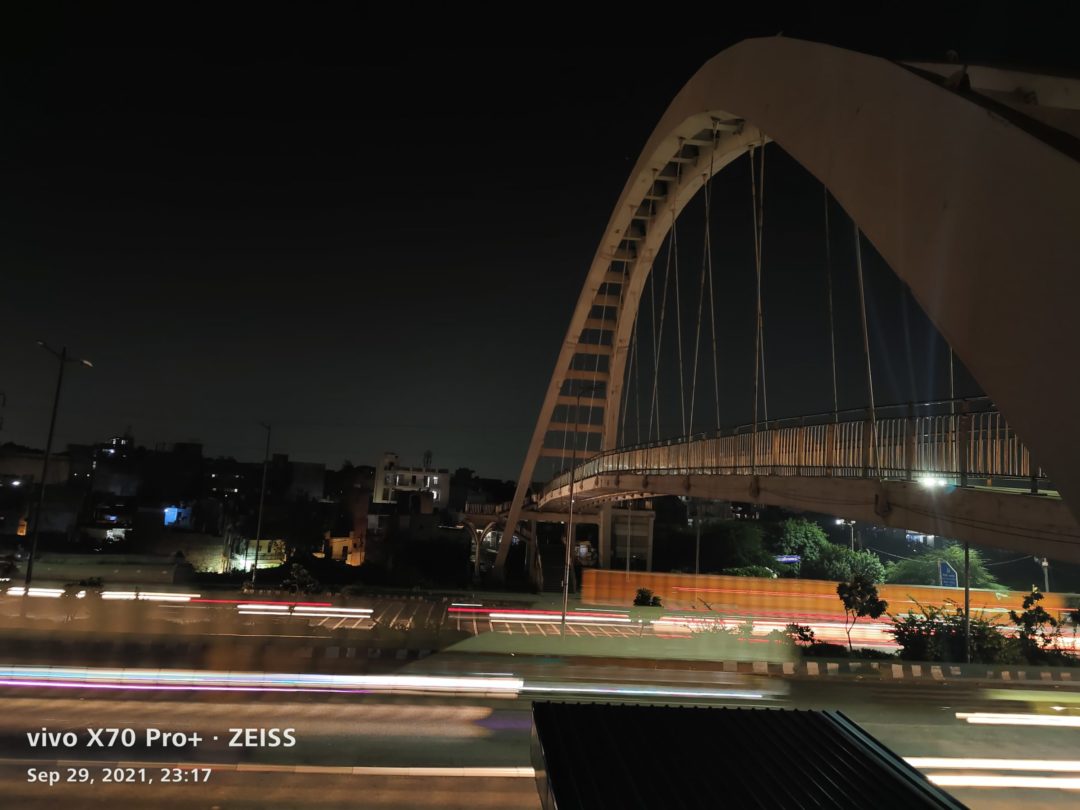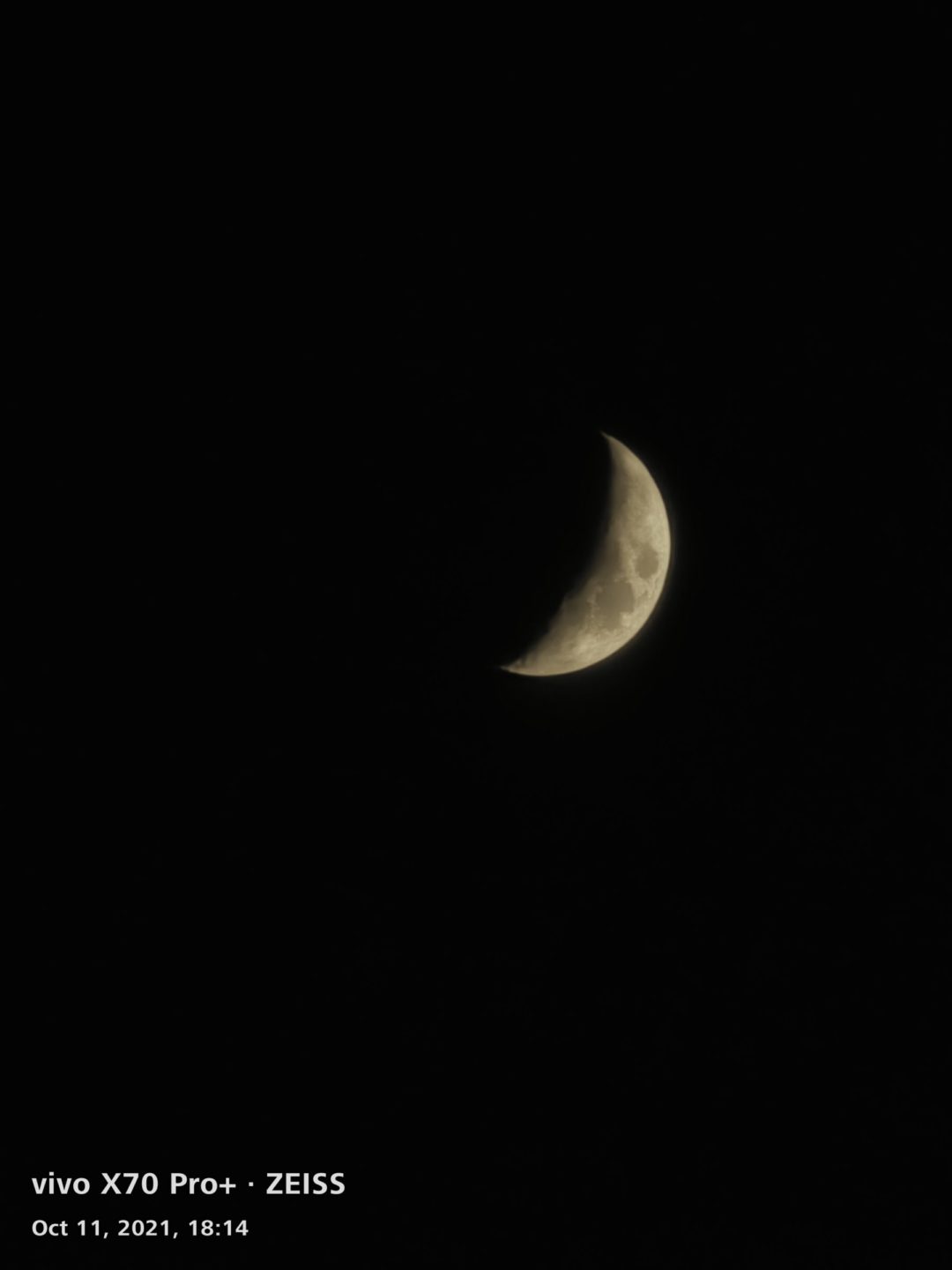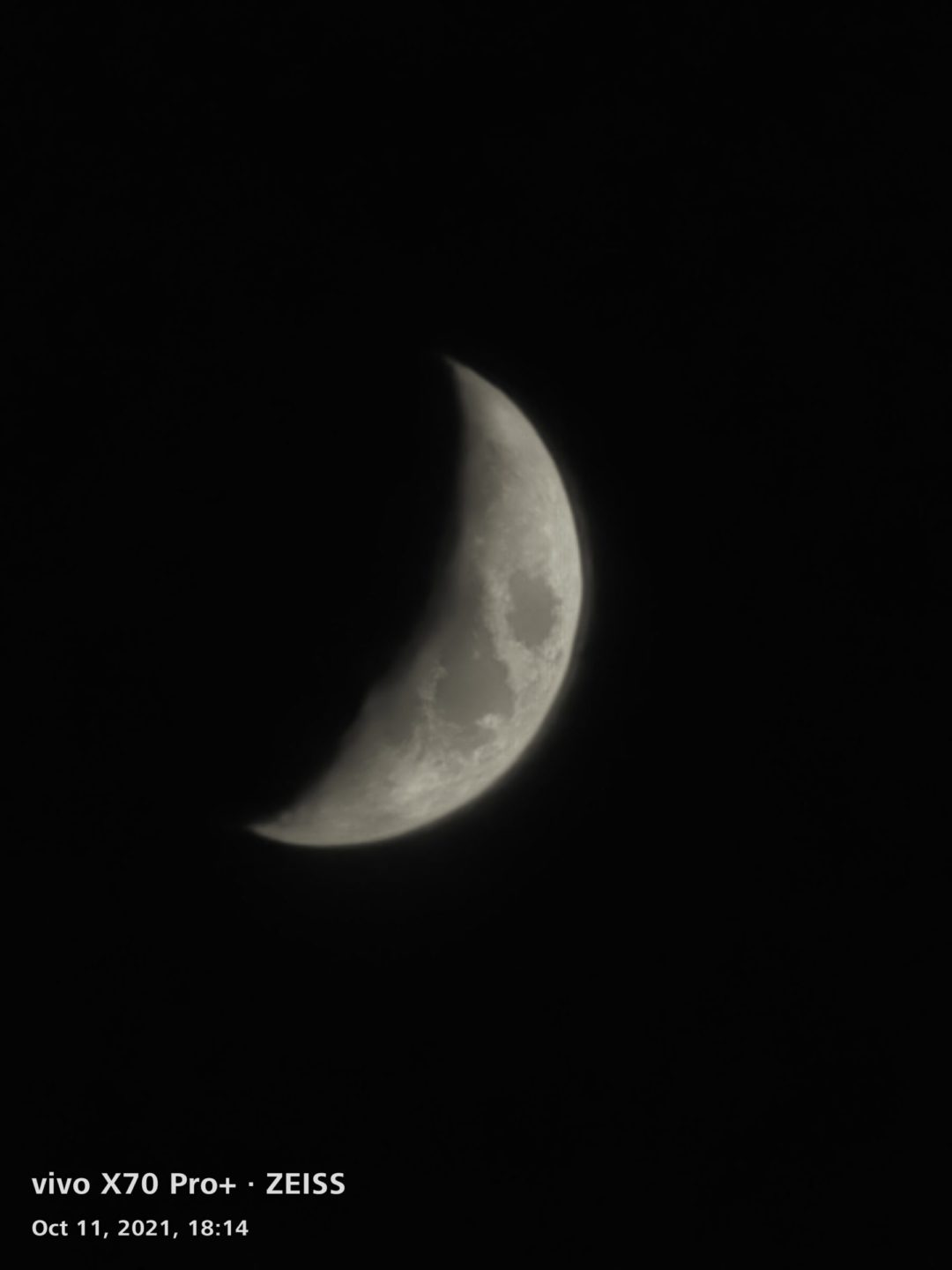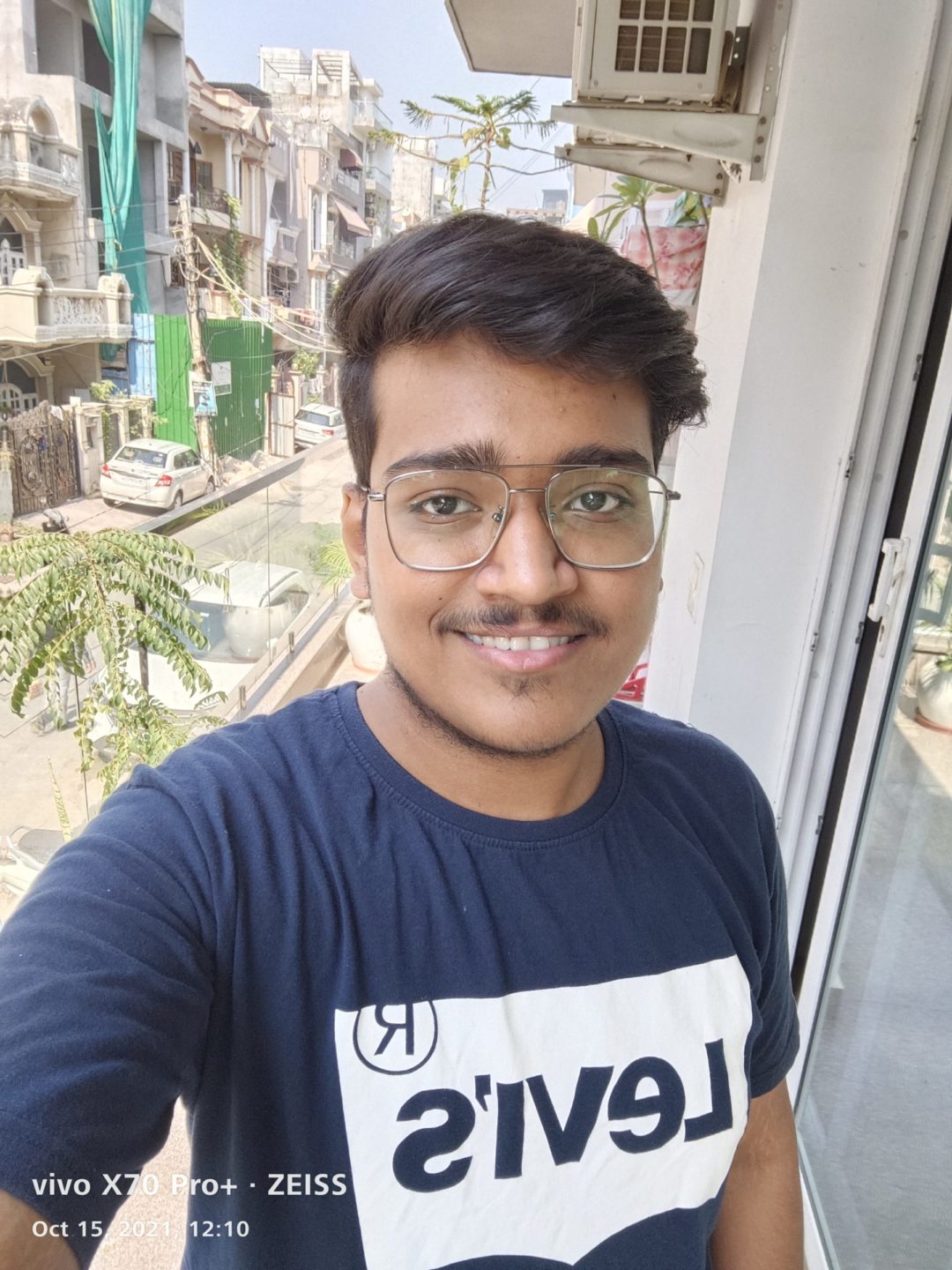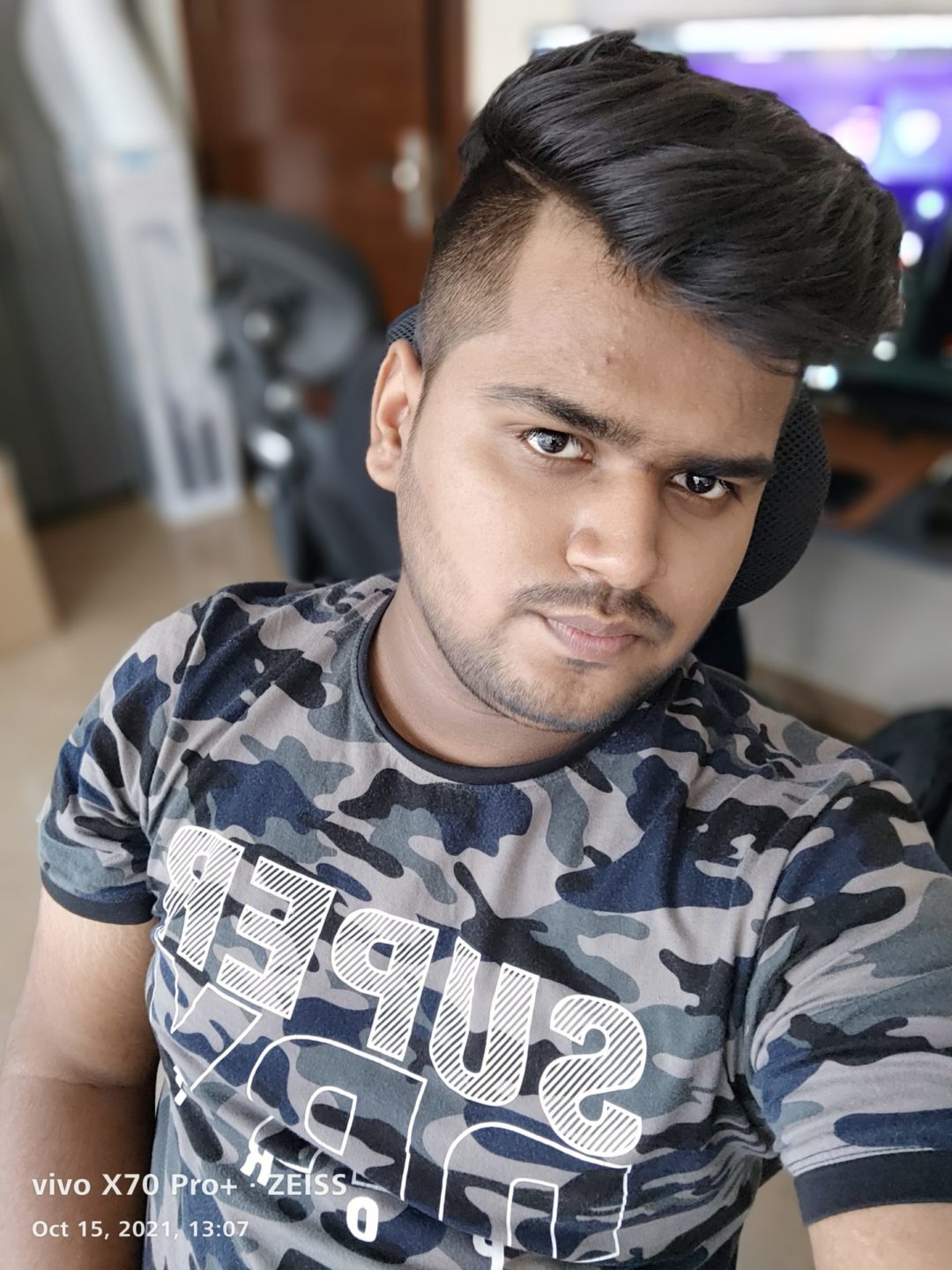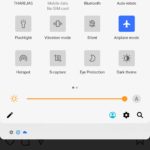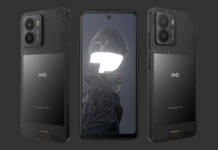Smartphone photography is a niche that is very evolved and complicated at the same time. The ideal pick for the best camera smartphone isn’t the same for everyone as different smartphones harness a different camera approach to photography. Whereas the Vivo’s X series lineup was usually conserved for its innovation-based flagship-tier devices. Last year, Vivo hit the charts with its X50 series by the virtue of its first-ever micro-gimbal stabilization which is fascinating in the smartphone era.
Around the first half of the year, Vivo announced its X60 series which features its partnership with Zeiss for implementing better camera tech. This technology results in improved image processing along with the perks of gimbal stabilization. While the Vivo X60 Pro+ was a camera delight for prolific photographers, there were some compromises to be made on it, like the lack of – IP rating, stereo speakers, wireless charging, and a QHD+ Display; which pulled it back to be known as a true flagship. At a retail price of 69,999 INR, contenders from rival brands offered more value to money and deliver a qualified flagship experience than Vivo X60 Pro+.
Learning from its earlier miscues taken on its predecessor, they’re turning the heat up with the Vivo X70 Pro Plus. It bundles up a flagship SOC, a unique design, and a fast charging technology. Along with these, it also holds some extra flagship features like a QHD+ Display, IP68 water, and dust resistance, and wireless charging technology which aims to deliver a true flagship experience with almost no compromises while keeping its main USP precisely focused on cameras. After spending some time with this device for two weeks, here’s our review of the Vivo X70 Pro Plus. Before heading ahead, let’s have a quick look at the specifications.
Vivo X70 Pro Plus Full Specifications
| Brand | Vivo |
| Model | X70 Pro+ |
| Price in India | ₹79,990 |
| Release date | 9th September 2021 |
| Launched in India | Yes |
| Form factor | Touchscreen |
| Dimensions (mm) | 164.54 x 75.21 x 8.89 |
| Weight (g) | 209.00 |
| IP rating | IP68 |
| Battery capacity (mAh) | 4500 |
| Fast charging | Proprietary |
| Colours | Enigma Black |
| Refresh Rate | 120 Hz |
| Screen size (inches) | 6.78 |
| Touchscreen | Yes |
| Resolution | 1440×3200 pixels |
| Processor | 1.8GHz octa-core (1x3GHz + 3×2.41GHz + 4×1.8GHz) |
| Processor make | Qualcomm Snapdragon 888+ |
| RAM | 12GB |
| Internal storage | 256GB |
| Rear camera | 48-megapixel (f/2.2) + 50-megapixel (f/1.57) + 12-megapixel (f/1.6) + 8-megapixel (f/3.4) |
| No. of Rear Cameras | 4 |
| Rear autofocus | Yes |
| Rear flash | Yes |
| Front camera | 32-megapixel (f/2.45) |
| No. of Front Cameras | 1 |
| Operating system | Android 11 |
| Skin | Funtouch OS 12 |
| Wi-Fi | Yes |
| Wi-Fi standards supported | 802.11 a/b/g/n/ac/Yes |
| GPS | Yes |
| Bluetooth | Yes, v 5.20 |
| NFC | Yes |
| Infrared | Yes |
| USB Type-C | Yes |
| Number of SIMs | 2 |
| SIM 1 | |
| SIM Type | Nano-SIM |
| GSM/CDMA | GSM |
| 3G | Yes |
| 4G/ LTE | Yes |
| 5G | Yes |
| Supports 4G in India (Band 40) | Yes |
| SIM 2 | |
| SIM Type | Nano-SIM |
| GSM/CDMA | GSM |
| 3G | Yes |
| 4G/ LTE | Yes |
| 5G | Yes |
| Supports 4G in India (Band 40) | Yes |
| In-Display Fingerprint Sensor | Yes |
| Compass/ Magnetometer | Yes |
| Proximity sensor | Yes |
| Accelerometer | Yes |
| Ambient light sensor | Yes |
| Gyroscope | Yes |
BOX CONTENTS
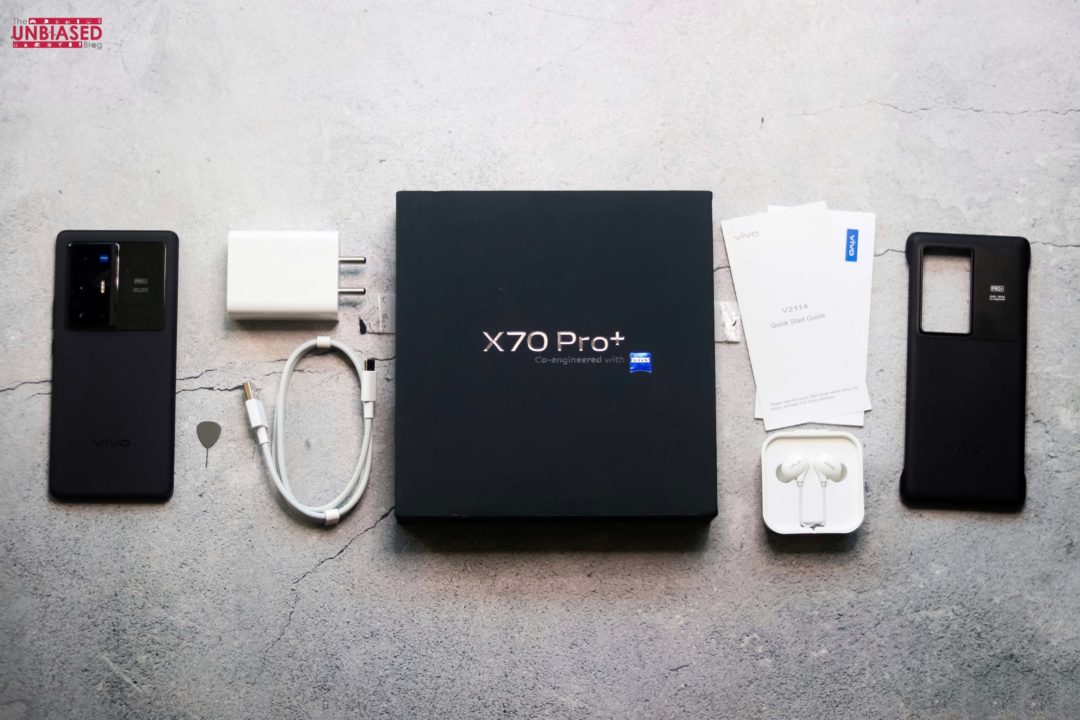
- Vivo X70 Pro Plus Handset
- 66W Fast Charging Brick
- Type-C Data Cable
- SIM Ejector Tool
- User Manual and Warranty Card
- Plastic Case
- Earphones
- Earphone Jack Adapter
DESIGN & DISPLAY
If you’re someone who appreciates Vivo devices for their implementation of sleek and lightweight smartphones, the Vivo X70 Pro Plus is a chunky device in every sense of the word with a considerable weight of 213 grams. It feels slightly tall and wide for in-hand operations. The curved display corners aid for better gripping to the device and doesn’t accidentally register palm touches. However, it feels way more ergonomic than Samsung Galaxy Note 20 Ultra and lighter than the Xiaomi Mi11 Ultra.
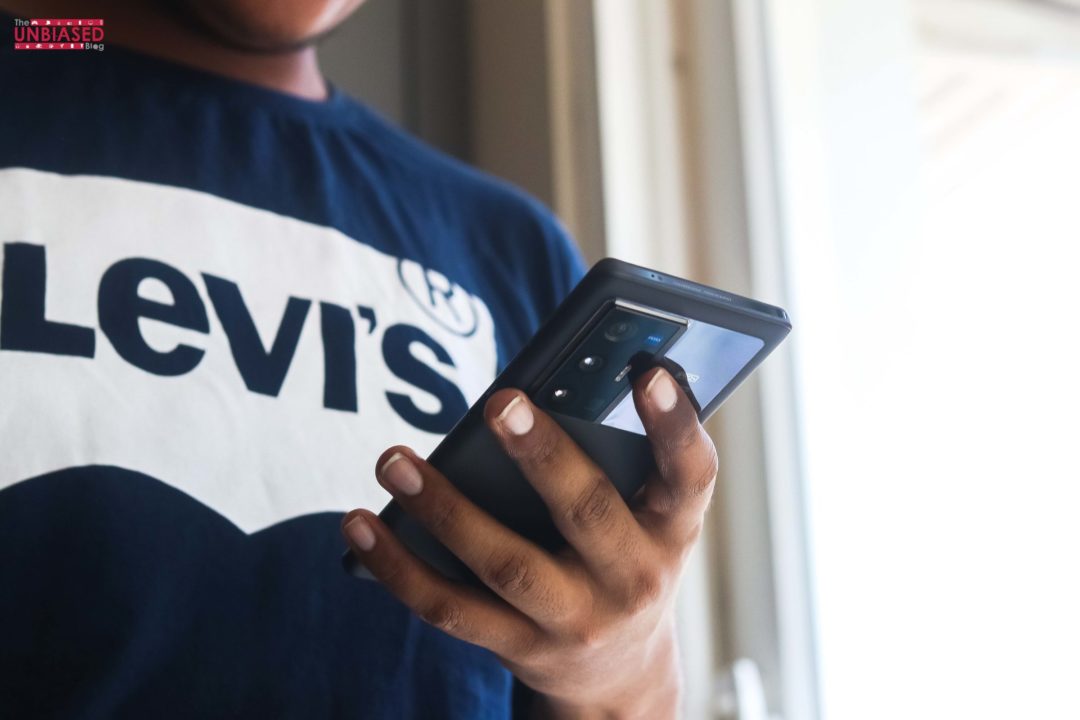
With the likes of Samsung, OnePlus, and Xiaomi, this smartphone looks more elegant and luxurious to hold. This mammoth two-step camera module also drives weight along with being the most noticeable trace on it. The device wobbles a lot if you touch the left side of the display when it’s kept on a flat surface like a table. Along with to its right, it houses a reflective glass with ‘PRO+’ written in a rectangular box and ‘ Vivo | ZEISS Co-engineered’ next below to it. This reflective area can be useful to click selfies from the rear camera but it becomes unpleasant while clicking mirror selfies and tends to catch smudges and fingerprint traces easily.
Ditching the vegan leather finish, this Fluorite AG matte finish on the Vivo X70 Pro Plus gives it a subtle and premium in-hand feel without attracting smudges and traces. If you’re someone who appreciates handy smartphones, this huge form factor can be a bummer for single-hand operations. Vivo claims that it holds a crystallized glass with a prismatic surface which is quite evident as soon as sunlight strikes the back. On the bottom, it holds ‘Vivo’ branding in a rubberized texture. Elsewhere, all the essentials are on point.
It boasts a metal chassis on the sides and flattened top and bottom edges just like from its earlier iteration. On the top, ‘PROFESSIONAL PHOTOGRAPHY’ is embossed along with the IR blaster and secondary microphone to its right. The right side is occupied with the Power button and volume rockers whereas the left side is bare. However, I miss that textured power button which is available in X60 Pro+ which isn’t here. There’s a standard USB-C Port, primary microphone, speaker grille, and Sim Tray Slot on the bottom. This device lacks a headphone jack which Vivo tries to cover up by bundling the earphone jack adapter in the box.
As for audio, Vivo finally packs in a stereo speaker setup, ditching the single bottom-firing speaker from the previous generations. These speakers are loud enough and sound fantastic, it also holds clarity even when cranked up to higher volume levels. Finally, a truly welcome addition is the IP68 Water and Dust resistance rating on a Vivo device, protecting the device from water spills and dust. There is an in-display fingerprint scanner that is fast for day-to-day usage. The haptic feedback of Vivo X70 Pro Plus holds excellent vibrations. However, you need to manually adjust the desired feedback in G-board as per your liking.
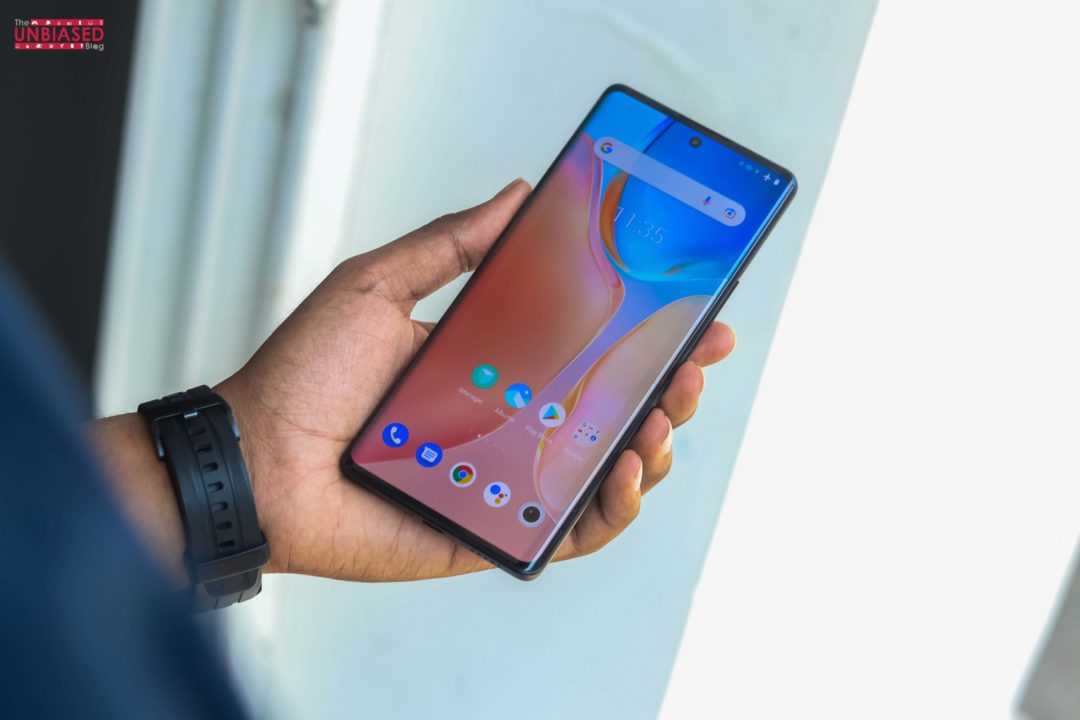
Vivo is bumping up its display hardware with this iteration from FHD to QHD+ resolution. Over to the display, the Vivo X70 Pro Plus holds a 6.67 inch curved AMOLED display with the support for QHD+ resolution which supports 120hz of refresh rate. However, there is an option to choose QHD and FHD to conserve battery juice. The punch hole camera is situated in the top middle of the display. With the LTPO technology, the refresh rates adaptively switch from 1Hz to 120hz depending on what you’re using in the device. Fortunately, you can manually pick between 60hz and 120hz as well. It offers crispy contrast levels with deeper blacks and reproduces punchy colours; the credit goes to this Amoled 10-bit E5 display.
The implementation of LTPO and E5 Amoled Type Display majorly gives it the advantage to use a 120hz refresh rate on QHD resolution. Within the three display colour profiles i.e, Standard, Professional and Bright; We’ll recommend using it on Bright for better colour reproduction. These 1500 nits of peak brightness make sure that the display gets bright enough and remains viewable under harsh sunlight. This curved display panel hasn’t had any problems with accidental palm touches which is a major downside with the curved displays. If you’re a binge person, consumption of content in HDR10+ will help watch OTT content. In our test, Netflix managed to play videos in HDR whereas it doesn’t work on Amazon Prime
PERFORMANCE
The Vivo X70 Pro Plus is a powerhouse while looking at its predecessor. The Qualcomm Snapdragon 888+ SOC chip is the best chipset in the world of android, with 12 Gigs of LPDDR5 RAM and 256 Gigs of UFS 3.1 storage which cannot be upgraded via MicroSD Card. If you feel that 12GB Ram isn’t enough for you, the virtual RAM comes to the rescue and adds extra 4GB which makes it 16 gigs of RAM. That’s massive! This hardware screams impeccable performance with zero compromises.
As far as benchmark scores are concerned, it scores 816051 in Antutu Benchmark, 1126 Single-Core, and 3301 Multi-core scores in Geekbench 5. During our CPU throttling test, the CPU throttled to 79% to its max performance. I had no troubles maxing out higher graphics and through multitasking, it’s a buttery smooth top-tier experience with zero stutters and lags. Playing some of the game titles like Asphalt 9, Battleground Mobile India, Call of Duty, and Genshin Impact, it manages to run these graphic-hungry games with ease. I’d also noticed that the Genshin Impact is smoother than I’ve experienced on any other flagship smartphones so far.
While testing benchmark scores, the device gets warm after the CPU throttling test, so we shut down the device and let it cool for 15 minutes. Meanwhile, thermal optimization remains excellent for me while multitasking and playing games. It was strange to notice such abnormal heating issues while running benchmark apps but it won’t be a factor for consumers to skip this performance beast. A built-in tool allows switching between three profiles:- Battery Saver, Balanced Mode, and Performance Mode. However, we didn’t feel the need to switch to the performance profile. Along with this GameSpace, it bundles some features i.e, 4D Game Vibrations, ESport Mode, Voice Changer, Mute notifications, Lock Brightness, AutoPlay with the screen off, and Eagle eye view; which can be a sheer pleasure for prolific gamers.
CAMERA
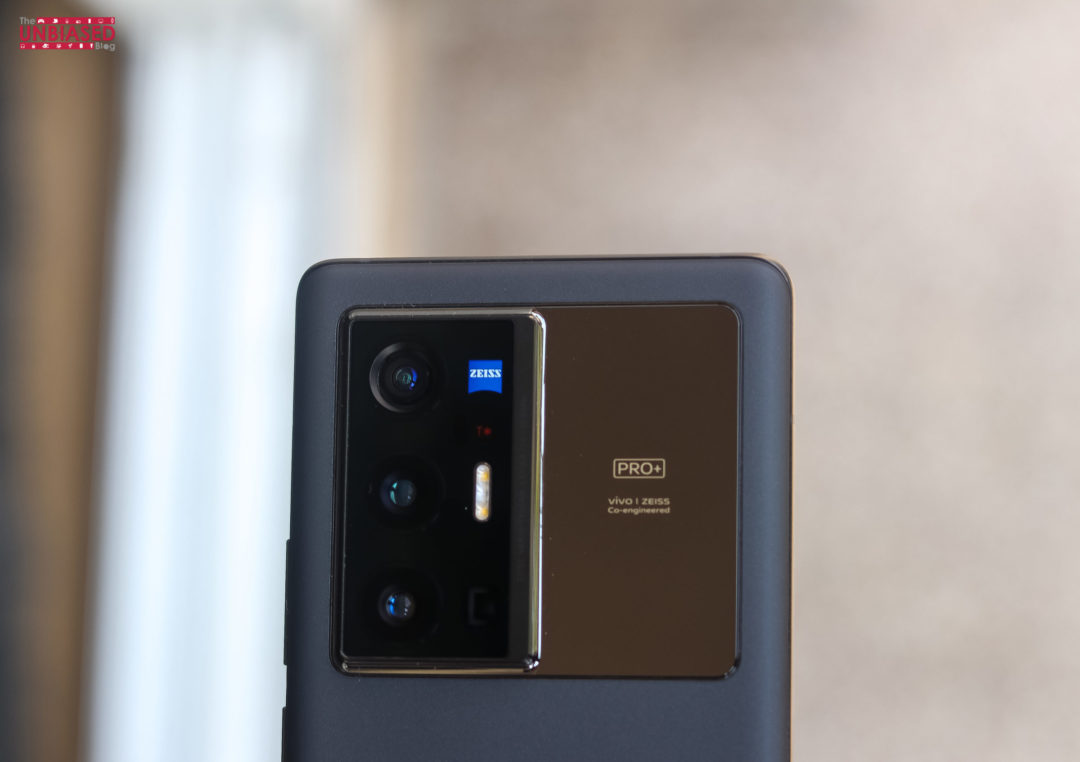
The Vivo X50 and X60 series are popularised to onboard best-in-segment cameras and Vivo X70 Pro+ is no exception. It houses a quad-camera setup on the rear which includes a 50MP Primary Samsung GN1 Sensor along with Optical Image Stabilization (OIS), a 48MP Ultra-Wide Sony IMX598 Sensor which captures a 114-degree field of view with the micro-gimbal stabilization, a 12MP Portrait Lens which is a Sony IMX 663 sensor with the support of Optical Image Stabilization (OIS) and an 8MP Periscope Lens which can zoom up to 5x optical and 60x of zoom digital with the support of Optical Image Stabilization.
The Primary 50MP shooter produces vivid colours while maintaining a good dynamic range. The pictures reproduce colors that are realistic with better contrast and details. The details are quite noticeable as soon as peeping into the picture. We didn’t encounter much digital noise while shooting pictures in indoor and outdoor situations in daylight and well-lit scenarios. Due to Zeiss T* Coating, Vivo X70 Pro+ doesn’t struggle in balancing the sunlight and glares produced by a source of light while preserving details in the scenario without highlight clipping. This coating can be helpful while shooting typical light sources i.e, Street lights, bulbs without producing glare and ghosts into a picture. Due to the large camera sensor, it produces background blur without the use of portrait mode. If you’re looking for more creamy bokeh, Boils down to the Zeiss Portrait Styles. It features 4 Zeiss Portrait Style i.e, Biotar, Sonnar, Planar, and Distagon which offers edge detection to be on point with a pleasant bokeh.
The Ultrawide Angle Lens holds a 114-degree field of view which is comparatively lesser than the Xiaomi Mi 11 Ultra, Samsung Galaxy S21 series, and even from its previous iteration i.e, Vivo X60 Pro+. Pictures captured from Primary and Ultrawide lenses look almost similar regardless of color schema with an impressive dynamic range and lesser edge distortion. In absolute low light conditions, it creates a vast difference between both the lenses which leads to image variation. This lens also doubles up as a macro lens which produces soft images with adequate details in it.
The 12MP Telephoto lens zooms up to 2x and 8MP of Periscope lens zooms up to 5x optical zoom, the rest remains up to 60x of digital zoom. The twist of the story begins here, both 2x and 5x produce different results from the primary color schema. Photos captured from a 2x telephoto lens look unsaturated whereas, with a 5x of Periscope lens, the picture looks saturated with differentiation in reproducing colours. There is an option to digitally zoom up to 60x but we’ll recommend it to click pictures till 10x of zoom, afterwards the photos don’t remain usable with lack of details and fringing. At this stage, smartphones with hybrid zoom take the lead and the choice of Vivo for using two separate lenses for zoom wasn’t a fair choice. There are contenders from Xiaomi and Samsung which are way better with hybrid zoom.
Moving towards video capabilities, Vivo X70 Pro+ can shoot up to 8K 30fps from the Primary Camera and 4K 60fps from the Ultrawide-Angle lens. It also supports video log mode that allows shooting videos in RAW and SuperRAW; which gives the advantage to churn out the maximum potential of the camera sensor along with the flexibility to edit footage. It also features a professional mode that supports shooting videos with every camera sensor available at the rear. With the V1 Imaging Chip, it increases its capabilities of shooting low light video through Super Night Mode which helps to achieve secondary brightness to lit the scene up and to reduce noise grains to lit up a dark or a dim scenario.
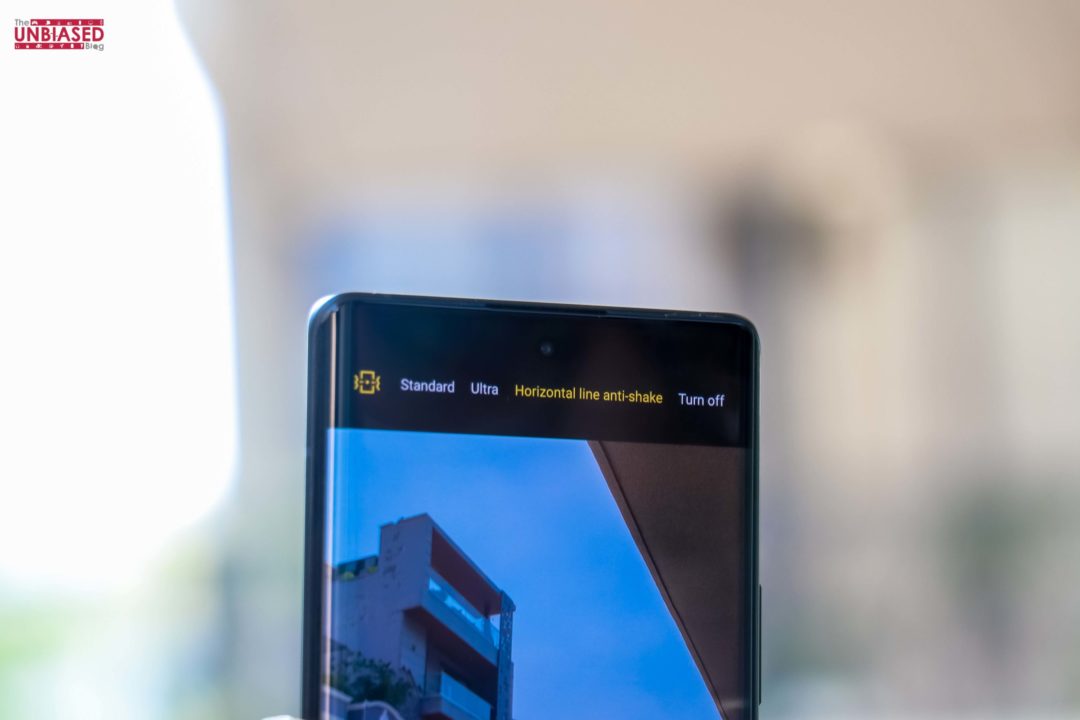
It features three stabilization modes:- Standard, Ultra, and Horizontal Line. The Horizontal Line Stabilization makes sure that the video orientation remains constant meanwhile the phone is rotating. With this stabilization mode turned on, it remembers its orientation even after a 360-degree movement with the device which is just stellar and this can be useful in a moving vehicle on rougher terrain. In this mode, the resolution maxed out at 1080p 30 fps only. In Ultra Stabilization, the resolution maxed out at 1080p 60fps. While shooting videos with Horizontal Line, it feels stuttery while moving left and right and it’s not as stable as the Ultra mode.
It includes several camera modes which include Super Panorama, Live Photo, Slo-mo video recording; which can record up to 1080p 240fps and 720p 480fps, Time Lapse Videography, SuperMoon, Astro Mode for astrophotography, Pro Sports, Long Exposure to capture traffic light flow or star trails. The 32MP Selfie shooter on Vivo X70 Pro+ works splendidly well. It captures pictures with an ample amount of detail and sharpness where skin softening is kept on a smoother side. The edge detection is on point and the bokeh looks creamy and the bokeh can be adjusted with various f stops as per your liking. If somehow Portrait Mode in the front camera doesn’t work for you, enabling Portrait Framing will do the job to enable that.
SOFTWARE & BATTERY
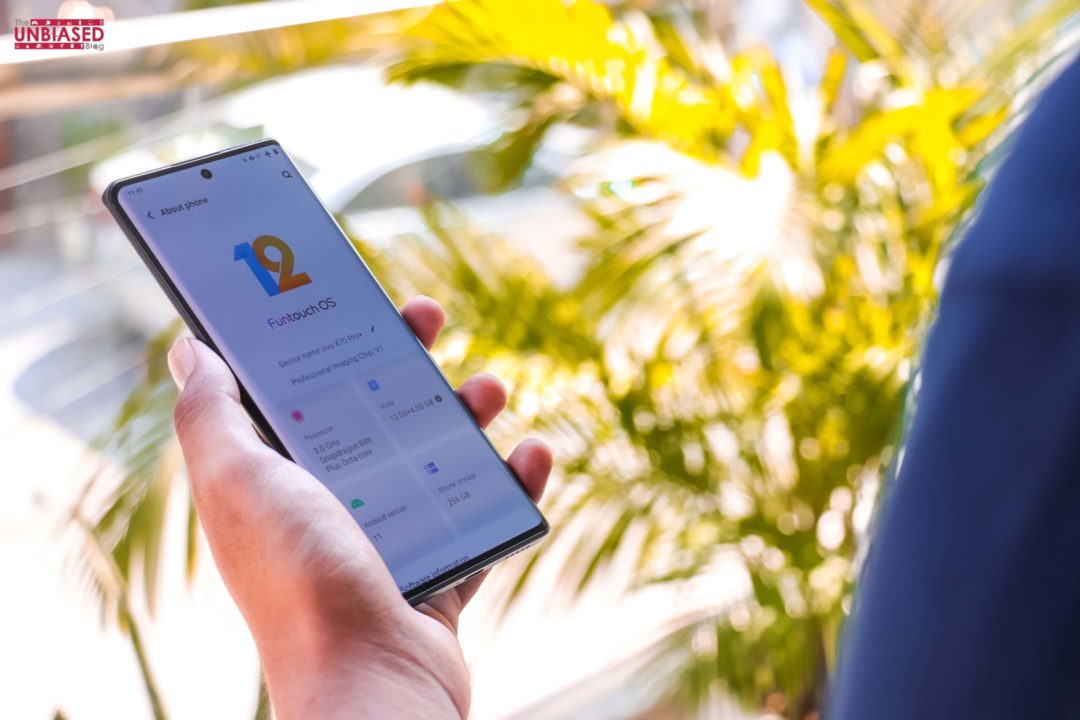
On the software side, The Vivo X70 Pro+ runs on Funtouch OS12 which is based on Android 11. As Funtouch OS continues its legacy to improve from its earlier iterations, it features a revamped launcher (along with the addition of 5 new widgets which are quite identical to the China-based Origin OS) and notification tray (the circular icons are now replaced with squarish icons). While swiping down the notification shade, say Bye Bye to JoviHome which used to appear on the top right section of the notification shade. Also, we’re happy to report that we didn’t encounter any spam notifications on this device throughout our usage.
The interface is very well optimized and scrolling between apps feels slick with basic customization features in this UI. Being a flagship, Vivo’s issue with bloatware continues to plague the smartphone which includes Amazon, Byjus, Facebook, Hot Games, Hot Apps, Netflix, PhonePe, Sharechat, and Spotify. However, Hot Apps and Games can be turned off in the launcher settings. Other bloatware can be uninstalled easily except Facebook, it can be disabled and can’t be uninstalled. However, we encountered a bug while capturing photos; when you’re too close to a subject, the camera continuously switches between primary and ultrawide lens due to which capturing photos become difficult. Let’s hope Vivo addresses this bug via an OTA update.
Vivo X70 Pro+ packs in a 4,500mAh battery which carries a slight raise with the Vivo X60 Pro+. As far as battery backup is concerned, it delivers a SOT of around 5 hours 30 minutes which includes scrolling through Instagram and Twitter, listening to music on Spotify, a mild camera usage, and 30 minutes of gameplay where the resolution is set to QHD+ and refresh rate is set to 120hz. Toning down the resolution to FHD+ and setting the refresh rates on the smart switch, it delivered around 6 hours 30 minutes of SOT which includes the same activities as mentioned above. If you’re in a situation where battery juice means the most for you, clocking down the display to FHD+ will do the job. Meanwhile, It states that the company’s excellent battery optimization shines and can easily last a day for casual tasks.
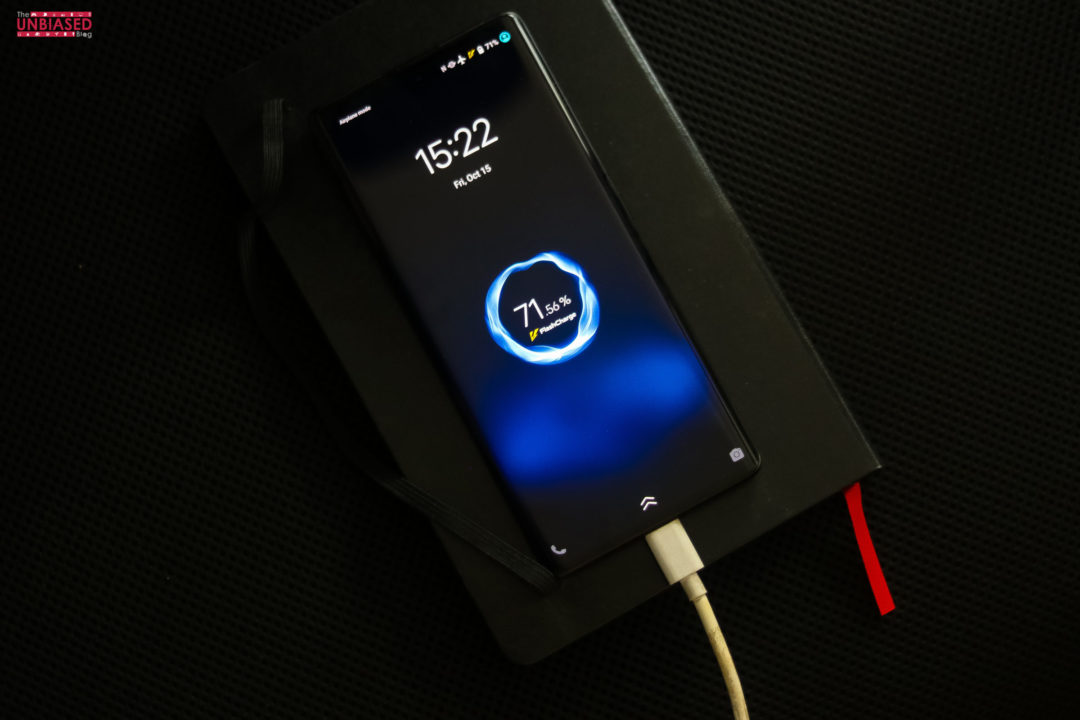
With 55 Watt of Fast Charging, which sounds snail-like while comparing 65 Watt Fast Charging Tech from competitors. With the 66W Fast Charger supplied in the box, it can charge the smartphone from 0-100% in 53 minutes which is still a flagship-level but not as rapid as what Realme, OnePlus and Oppo offer on the table. With this iteration, Vivo flags off a 50W Qi-enabled wireless fast charging solution into this device with the ability of reverse wireless charging.
Vivo X70 Pro Plus – THE UNBIASED VERDICT
The Vivo X70 Pro+ comes in only one storage configuration:- 12GB RAM + 256GB of storage which is priced at Rs 79,990. Finally, Vivo is understanding the basic urge of delivering a true flagship experience by adding IP68 Water and Dust Resistance, Wireless Charging, and a QHD+ Display, and Vivo X70 Pro+ is a testimony of that. It boasts a revamped quad-camera setup, gimbal stabilization for buttery stable videos, powerful SOC under the hood, and a luxurious design which stands it apart from the crowd.
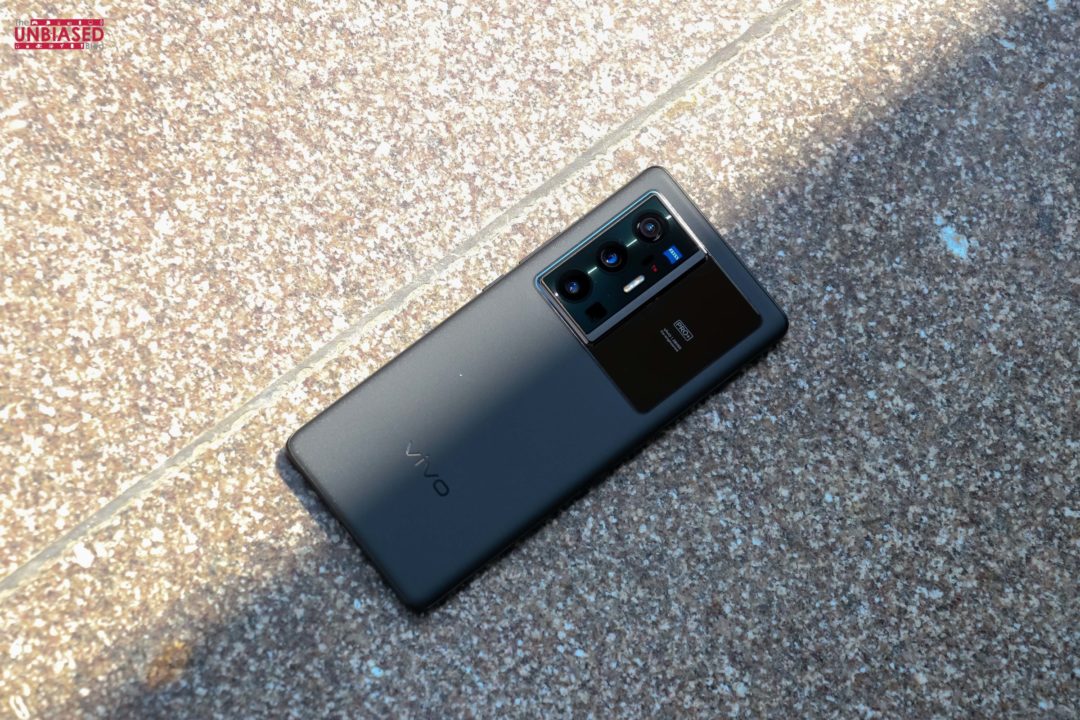
It might be a deal-breaker for those who don’t like bloatware at all while paying such a premium price tag, if you’re someone who prefers compact devices, this will be a chunky choice. The zoom capabilities are not as solid as other competitors usually offer in this segment. It delivers good results till 5x zoom but doesn’t offer a good result while zooming up to 10x. If you’re looking for a device with better zoom capabilities, Samsung S21 Ultra will be the choice which costs around Rs.1,05,999. But it comes with obvious compromises such as a better ultra-wide-angle lens and a handful of camera modes with no gimbal stabilization and lack of fast charging as well even after shelling out a lakh rupee. If you’re up to considering the OnePlus 9 Pro at a price of Rs. 64,999, it shares the display, battery, and wireless fast charging capabilities. However, it gets a slight bump in the wired charging department which is cloaked at 65 Watts. With the Oxygen OS 12, it totally revamped and swapped its interface with Oppo’s Color OS which is saddening for those users who used to adore this UI. However, we won’t recommend upgrading to a OnePlus device for Oxygen OS now.
Disclaimer: We tested the Vivo X70 Pro Plus for two weeks before writing this review. All our reviews are unbiased and are published without the brand getting to read it before you guys. We don’t change our reviews on pressure from brands and that’s the reason we are not sent review units from companies like Samsung, OnePlus, Xiaomi, and a few more.
